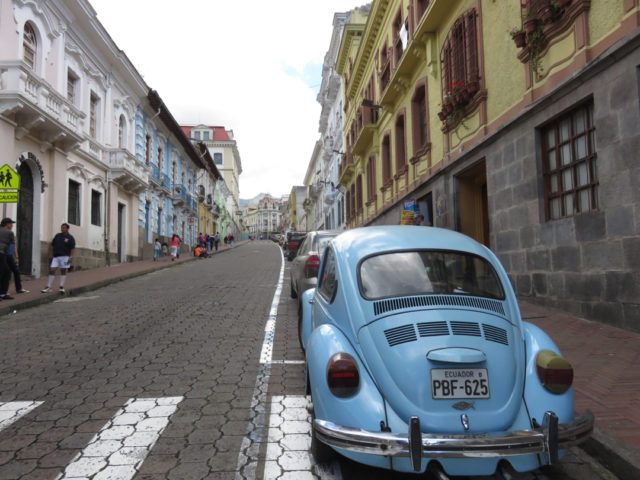
Quito (pronounced ‘kito’) is the capital city of Ecuador and has a population of about 2,700,000 people. Since Gregor and I are not big fans of driving through big cities, we didn’t really want to spend too much time in Quito. Ultimately, a string of van-related events led us back to Quito twice over the course of 4 weeks and we spent a total of 18 days in the city.
Quito’s city limit happens to be located within about 1 km of the equator, and the equator happens to receive a lot more sunshine than the poles due to the Earth’s curvature. Using our amazing powers of logic, we concluded that Quito would be the perfect place to buy a new solar panel. This is where our story begins…
The Solar Panel Project
We entered Ecuador during its rainy season (Mar/Apr) so the sun hadn’t come out for weeks. Under constantly cloudy conditions, we discovered that our portable solar panel wasn’t robust enough to maintain a full charge on Lucky’s house battery. Our computers, cell phones, interior lights, and 12-volt fridge simply demanded more power than our 80-watt panel could provide.
The battery draining issue was a little disconcerting. If our solar panel couldn’t maintain a full battery charge in cloudy conditions at the equator, how could we successfully work off-the-grid at higher latitudes? (e.g., in Chile and Argentina, where they use 220 V electricity)
Our solution was to buy a second, higher-wattage solar panel that was small enough to mount permanently on our luggage rack (above the driver and passenger).
Several people asked us: “Why not put the panel on your roof, beside the roof box?”. Well, the box is so heavy that moving it off-centre causes the roof top to lean to one side (believe me, we’ve tested this).
So here we were in a foreign country trying to find the perfect-sized solar panel for an odd-sized space. Luckily we met Arie, Dutch expat and owner of Aire’s Cabin, the place where we camped in Quito.
With Arie’s translation help we bought a 100-Watt solar panel from Renovaenergia in Quito for $150 USD ($203 CAD).
Gregor came up with the brilliant idea to make our solar panel hingeable. Together, we designed an aluminum frame for the hinging panel and had it custom made for $50 USD ($68 CAD).
Next, Gregor and I scoured the hardware stores in Quito for the right mounting hardware.
Having found all the parts we needed, Gregor installed the solar panel onto our van using Arie’s tools.
Over the 3-day solar panel installation, we discovered that Quito has absolutely everything you need to carry out any kind of domestic project. You just have to visit at least a dozen shops to find it all.
The VW Van Club
As we drove around greater Quito’s freeways looking for solar panel parts, we heard a high-pitched, intermittent wheezing noise coming from Lucky’s front wheels – a symptom of failing wheel bearings. Instead of sight-seeing the next day, we headed into central Quito to find some replacement parts.
For this, we got the help of our Mexican friends and fellow VW van owners, Eva and Juan Carlos (Xino-Xano). We first met these wonderful overlanders (and their three cats!) in Costa Rica last November and we kept in touch through Facebook as we travelled southward. While we were in Quito, we visited the mechanic shop where they were getting their engine rebuilt.
Thanks to the translation skills of Eva and Juan Carlos (along with directions from their mechanic, Pato) we got the parts we needed for the wheel bearing replacement.
That same afternoon, we met Ecuadorian VW Westy owner Chalo (Suramerica Sin Fronteras), who was introduced to us through Facebook by Swiss VW Vanagon owner Martin (viaje.ch).
Chalo is the first VW Westy Synchro (4×4) owner in South America. He and his wife, Sandra, love to host fellow travellers and they invited us to come over to their house for coffee. They speak only Spanish, but their warmth, hospitality, and shared love of VW vans transcended our language barriers.
We intended on leaving Quito after our visit, but Chalo and Sandra recommended that we stay an extra day to watch the Good Friday parade – one of the biggest annual events in Quito. Having been raised as a Roman Catholic, I had to check it out.
Good Friday Procession in Quito
The ‘Jesus de Gran Poder’ (Jesus of Great Power) parade is one of the largest Good Friday processions in the world, second only to Sevilla, Spain. Each year, more than 250,000 people flock to Quito’s historic city centre to watch and participate in a procession that demonstrates the Roman Catholic faith shared by 90% of Ecuatorianos.
As we waited patiently for the parade to come, dozens of vendors walked up and down the street selling things like balloons, umbrellas, snacks, and souvenirs.
As the front of the procession approached us, we saw a statue of Jesus carrying the cross followed by over a thousand people dressed in purple.
The colour purple is a symbol of penitence (or remorse) and the pointed headdress is a symbol of humility. Those wearing the pointed cones are called Cucuruchos.
The veiled women are called Veronicas, named after the woman who offered her veil for Christ to wipe off blood and sweat from his brow.
Walking among the purple penitents are individuals performing acts of suffering, such as carrying heavy crosses, walking barefoot with chains, and flagellating themselves with sticks and stinging nettle.
For those who are not Roman Catholic, the parade may seem like a disturbing freak show for religious fanatics. That was certainly what Gregor thought. As for me, well…okay, I admit that watching people marching in cone-shaped masks made me feel a bit uneasy. But watching people express their spirituality in this way reminded me that there are many people who believe in something greater than themselves.
I’m actually glad that we stayed an extra day in Quito to see the Good Friday procession. It’s one of those events in our trip that has helped us to understand Latin America’s cultural heritage.
Escape to Mindo
Up to this point, we had spent a total of 12 days in Quito – most of which were spent working on the van or working on our computers at Aire’s Cabin. We finally escaped the big city and headed for Mindo, a quiet mountain town in the cloud forest.
We camped at La Bicok Lodge, a beautiful property with cabañas, a pool, designer bathrooms, and a lovely French restaurant. There, we met up again with Eva and Juan Carlos.
It rained every day during our time in Mindo, but the sun peaked out long enough one morning for a hike to the waterfalls at Santuario de Cascadas. I went with Eva and Juan Carlos but unfortunately Gregor couldn’t join us because he had to work.
Although Mindo was beautiful and our camping facilities were awesome, the rain was a bit depressing. Also, it was too wet for us to tackle our next van project: replacing the pop-up tent canvas. So we decided to go back to the drier climate in Quito and stop at the Mitad del Mundo monument on the way.
About 15 km away from the monument we had our very first roadside emergency. At first, we thought the smell of burning rubber came from the truck in front of us. Then our blinking dashboard lights made us think again. The plume of white smoke from the back of our van confirmed it: the belt for Lucky’s water pump/alternator broke and our engine coolant started to boil.
Fortunately, Gregor pulled over just in time to prevent the engine from overheating and he valiantly replaced the belt with a spare. The repair only took about 45 minutes, leaving us enough time to visit Mitad del Mundo.
Middle of the World
Mitad del Mundo (Middle of the World) is Ecuador’s national monument that marks the Earth’s equator. Oddly, the monument itself is 100 metres away from Zero Latitude. Instead of paying money to see “not-the-real-equator” we visited the nearby Intiñan Museum where Zero Latitude was actually measured by GPS.
The ticket to Intiñan Museum includes an interesting guided tour (in English) explaining Ecuador’s indigenous cultures.
The museum tour also includes hands-on experiments demonstrating the difference between forces at the equator and those in the southern and northern hemispheres. Some of the experiments were bogus, but it was still fun to participate.
We were told that it’s difficult to walk in a straight line at the equator due to forces pulling you toward each hemisphere.
No visit to the equator is complete without a geeky discussion about the Coriolis Effect. The Coriolis Effect describes the relative movement of fluids due to the Earth’s rotation. In a nutshell, the Coriolis Force causes air and water masses to move in a clockwise direction in the northern hemisphere and in a counter-clockwise direction in the southern hemisphere. At the equator, the Coriolis Force is zero.
Contrary to what some of us have learned in high school Physics class, you can’t actually see the vortex direction of the Coriolis Effect when you flush the toilet. You can only see it in large-scale phenomena such as ocean currents and hurricanes.
And speaking of vortex…
Lucky Returns to Quito
Gregor and I drove back to Aire’s Cabin in Quito, where we were warmly greeted by Aire the owner, Alice the dog, and Moki the cat.
We started working on Lucky’s pop-up tent canvas at 7 am the next morning. The goal was to replace our old and moldy hemp canvas with a brand new acrylic canvas that we had brought back from the USA on our Christmas trip to Florida.
Attaching the corners of the canvas to the van was super hard because there’s not a lot of space there and the canvas was sooo tight. As we pulled the canvas into position, it ripped in several places. Luckily, we carry a sewing kit with us.
It took 8 long hours to replace the tent canvas. Gregor did most of the hard labour and he says it’s the worst job he has ever done on the van to date. Not only was it physically exhausting, it was also very frustrating because a small error on one corner of the canvas cascaded to a huge error on another corner, forcing you to undo your work and start all over again.
Gregor’s hard work was rewarded with German sausages and craft beer at Páramo Brauhaus Biergarten.
We were originally going to throw the old hemp canvas away but when we told our friend Chalo that we were replacing it, he asked if he could have it because it’s impossible for him to get a new one in Ecuador. Since Chalo had the means to disinfect the huge canvas, we happily gave it to him. In return, he and Sandra gave us a spare alternator belt (to replace our broken one) and treated us to a delicious steak dinner.
By this time, we had spent a total of 16 nights camped at Arie’s Cabin. When we announced to Arie that we had finished all our projects and we were leaving Quito for good, he chuckled and said: “I don’t believe you.”
To be continued in Part 2…

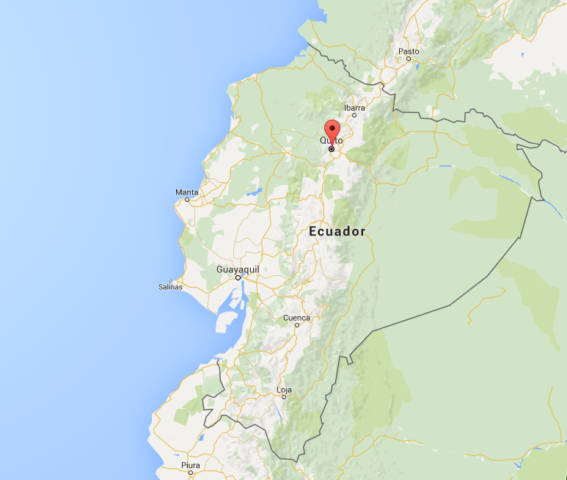


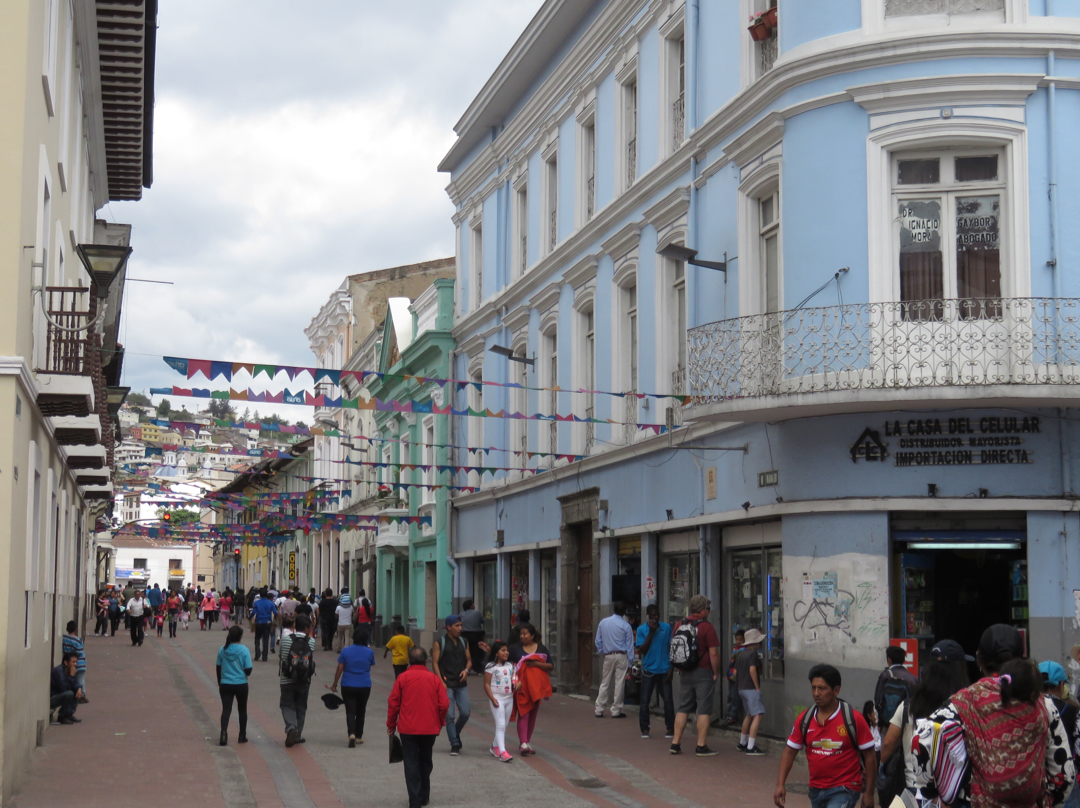
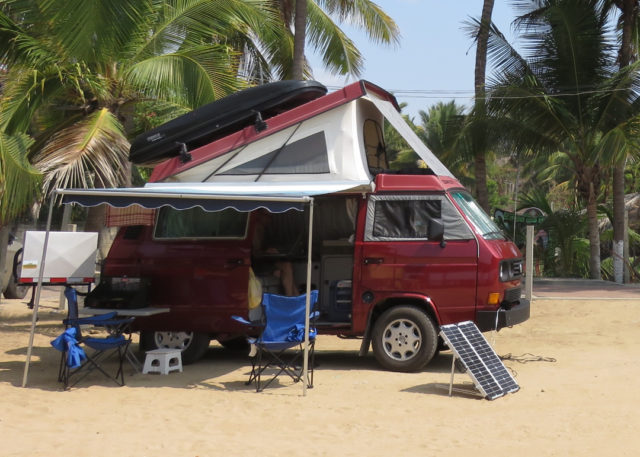
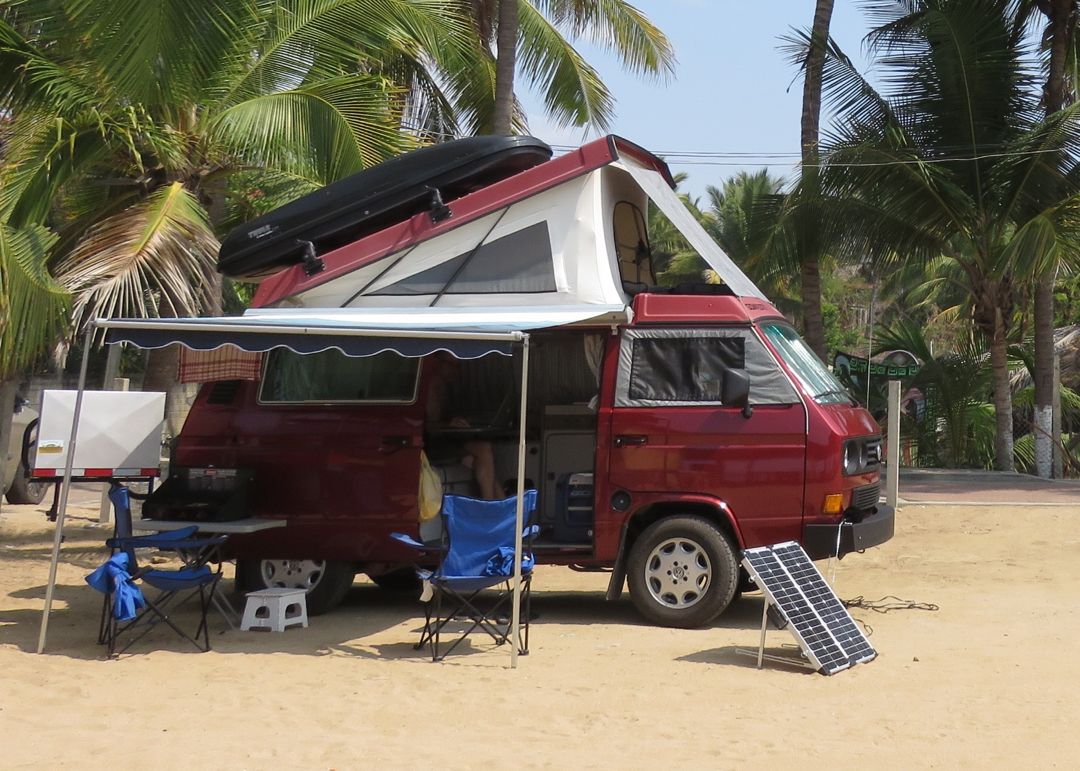
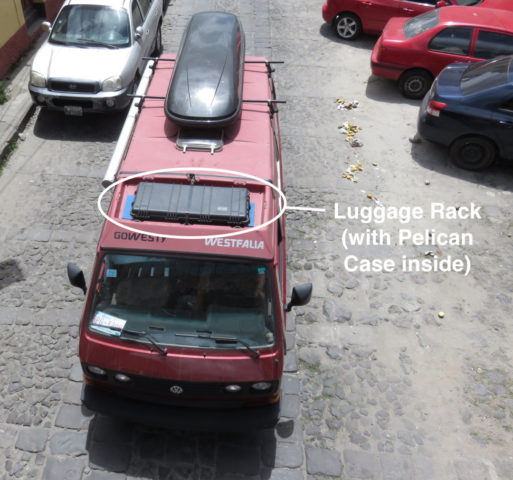
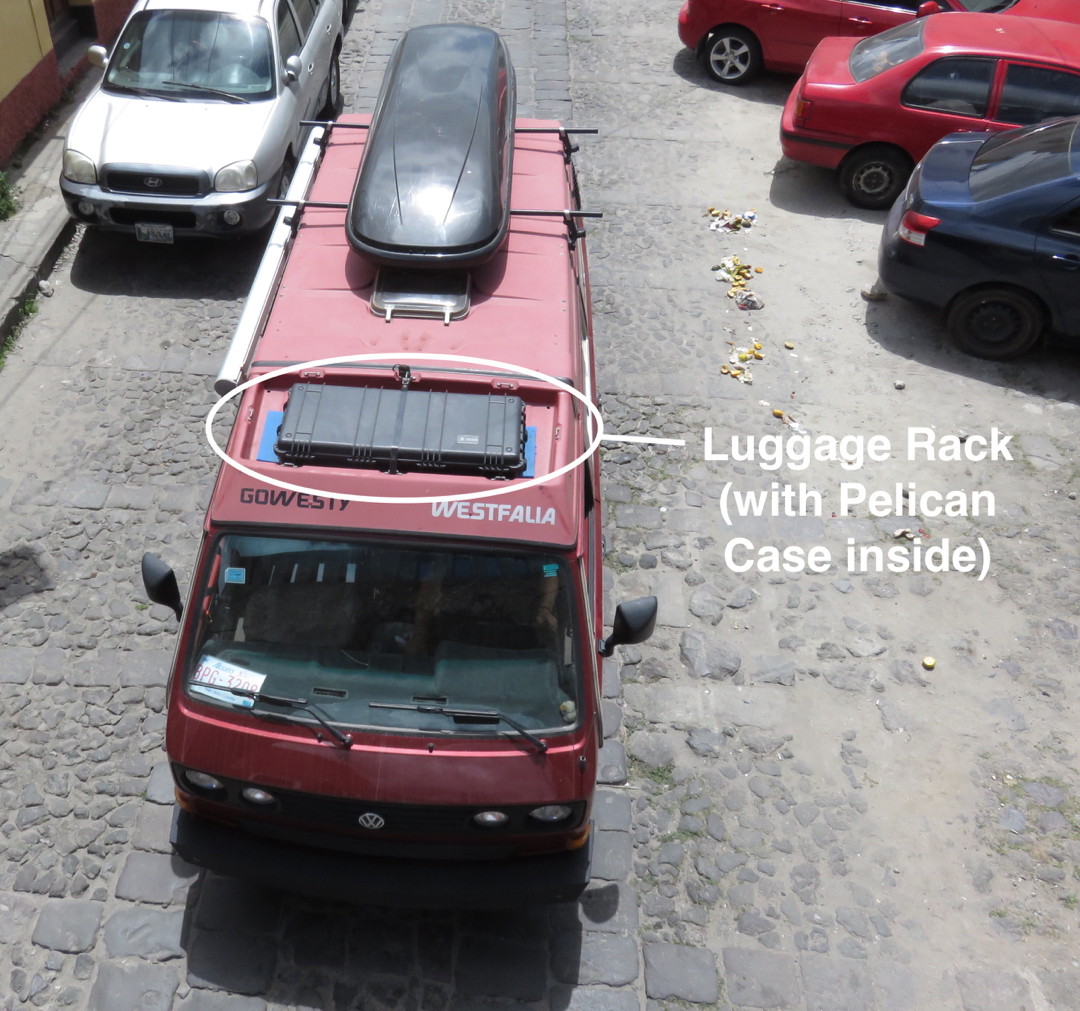
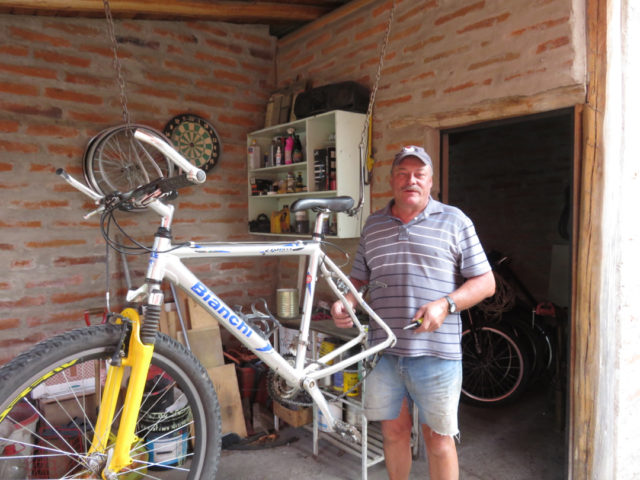
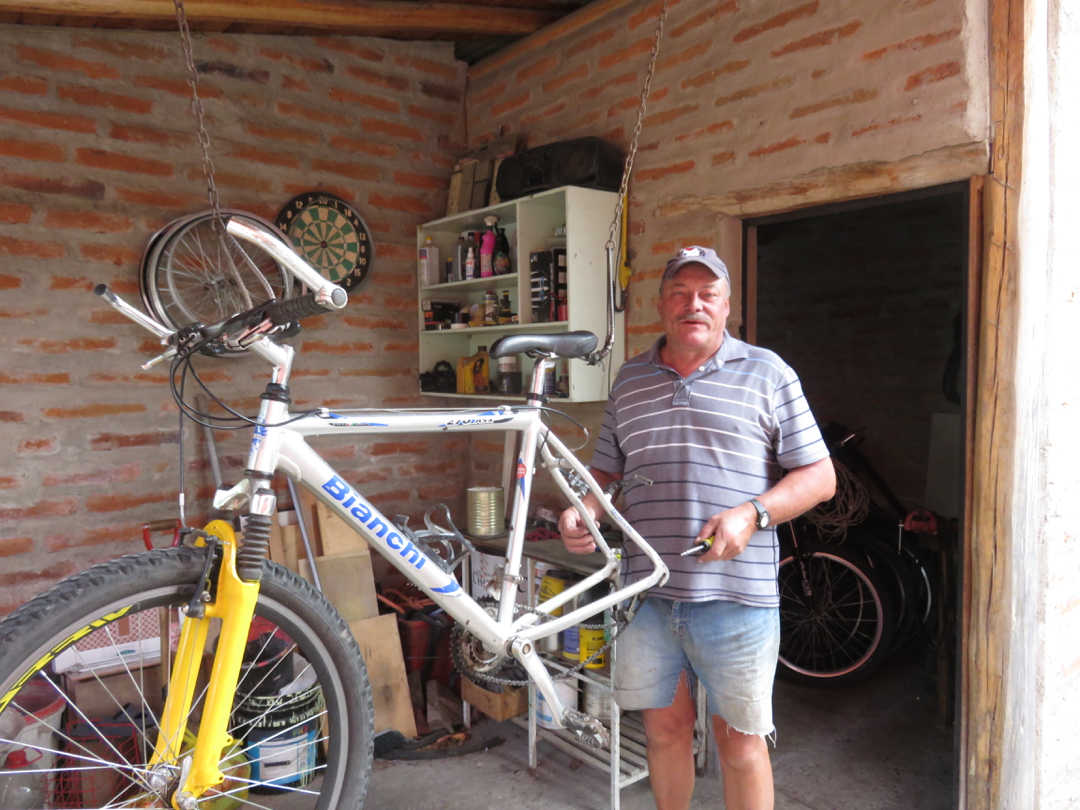
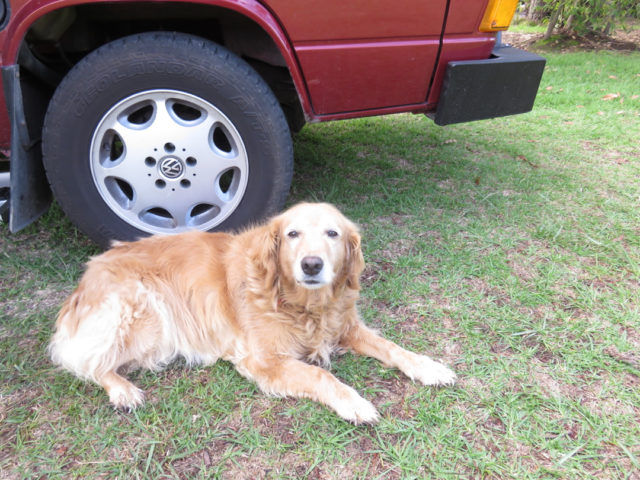
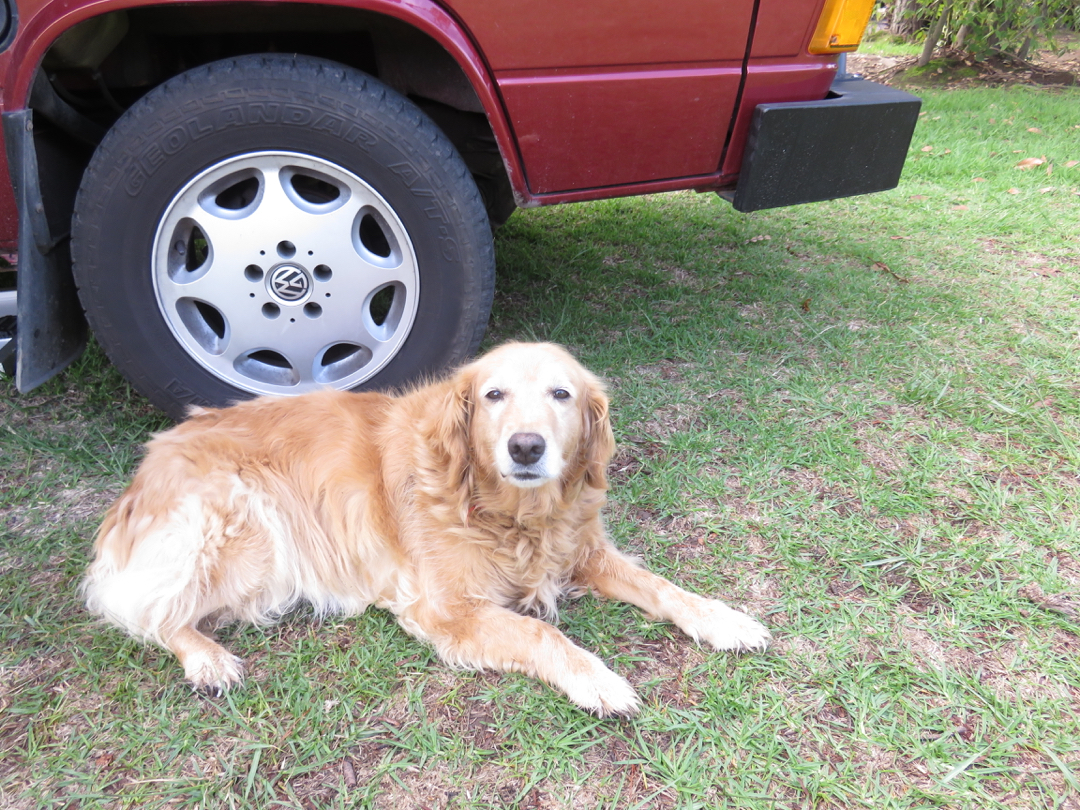
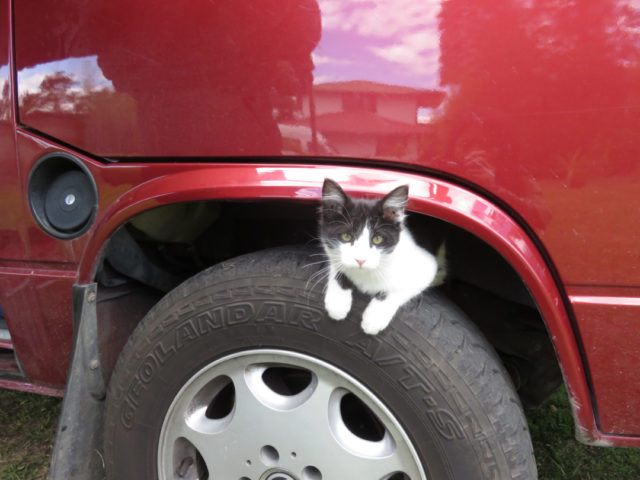

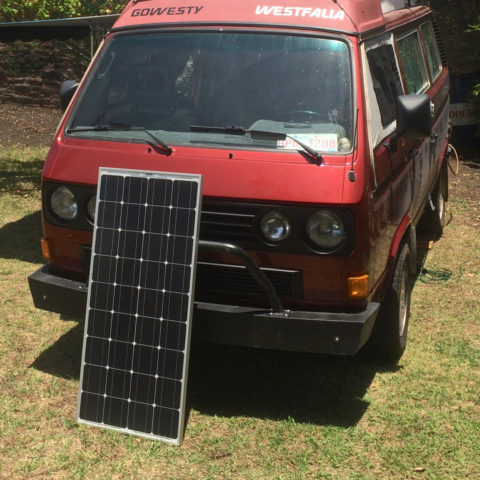
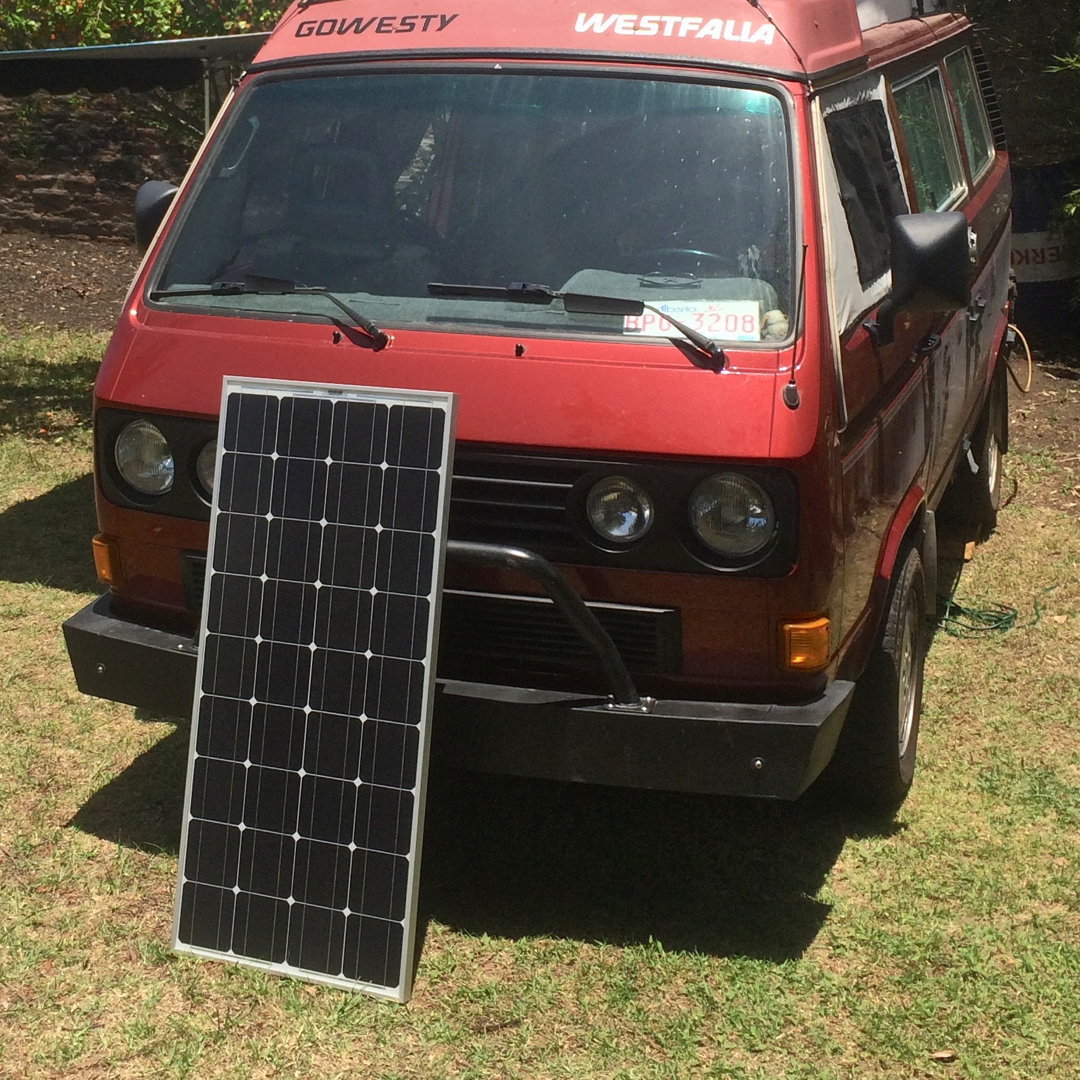

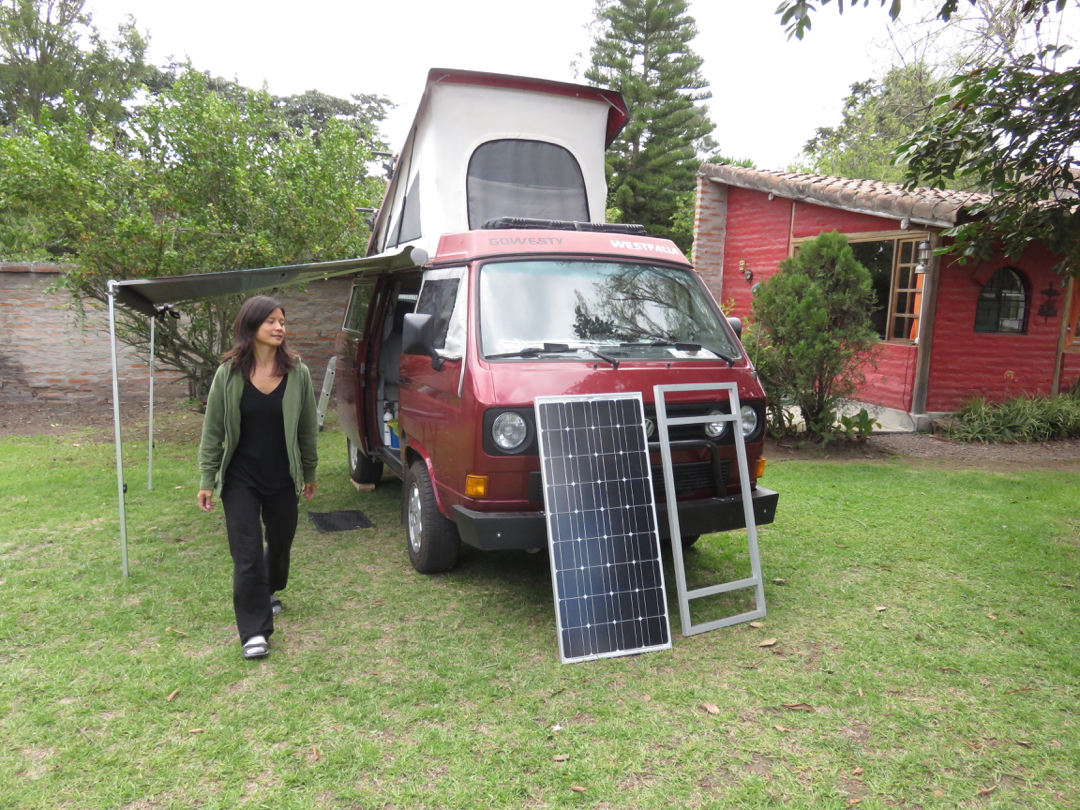
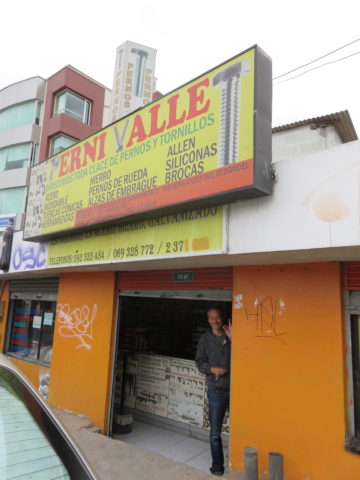
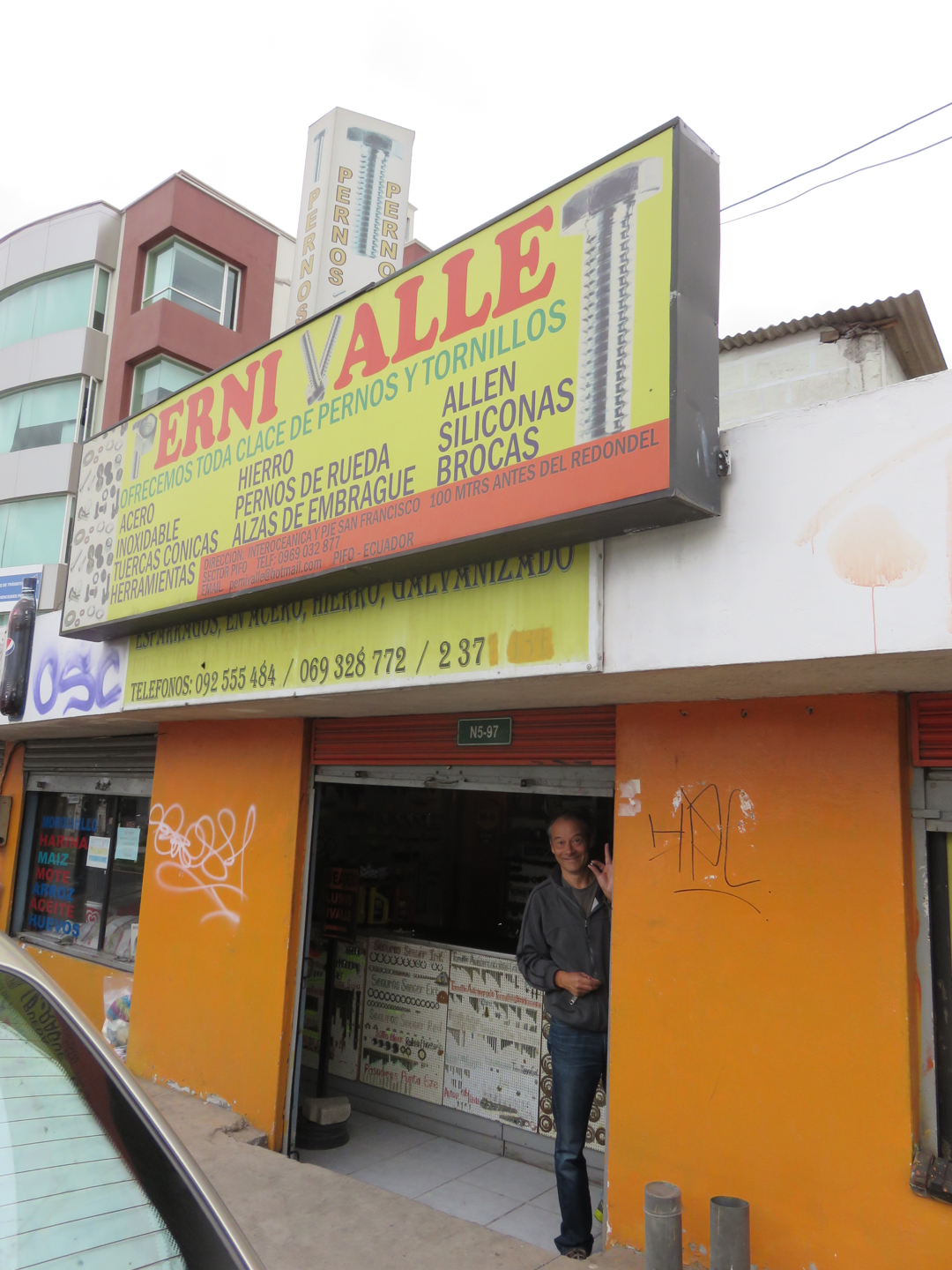
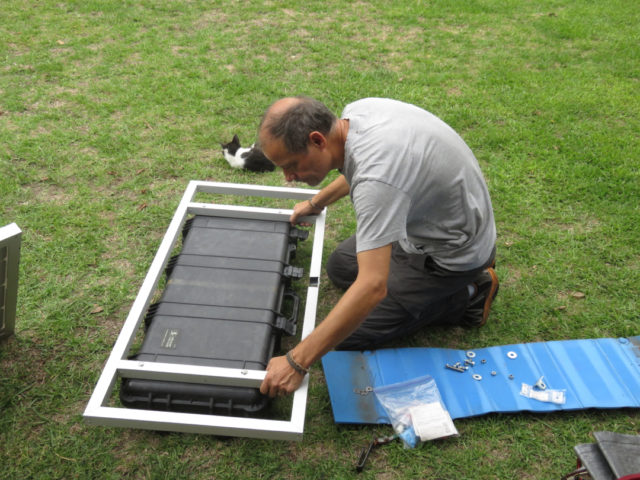
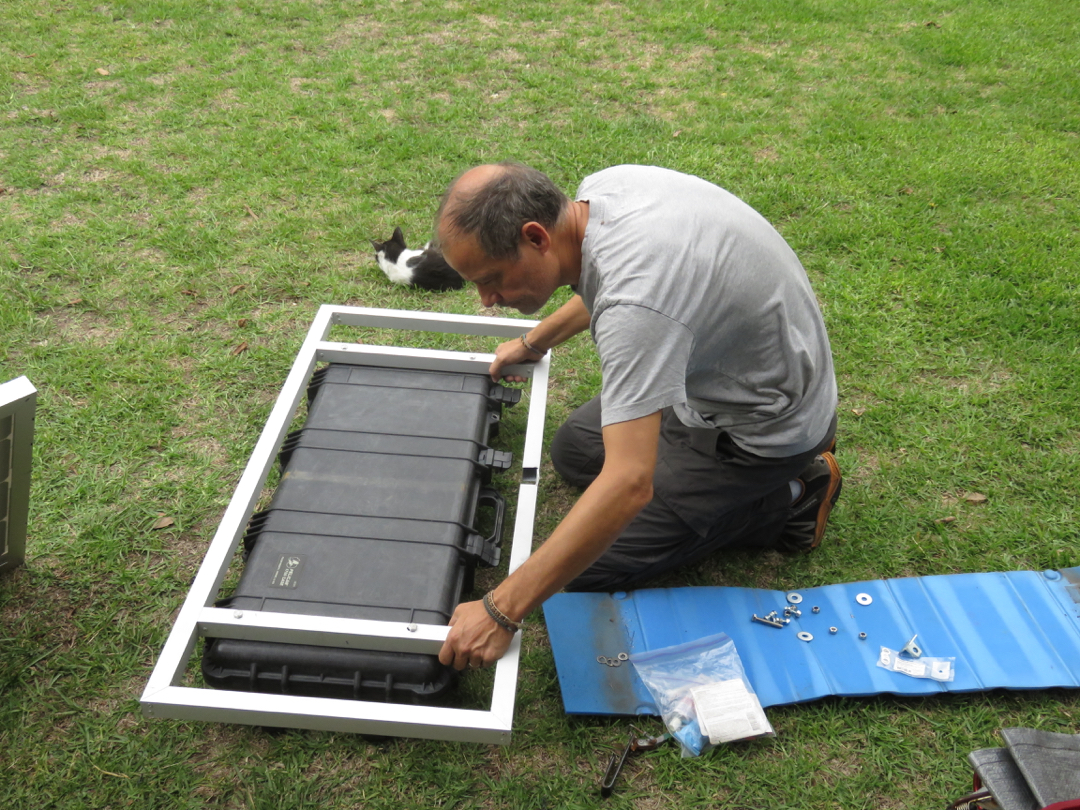
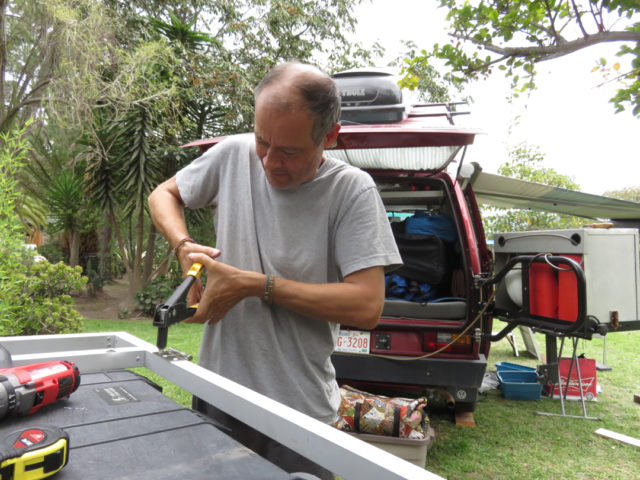

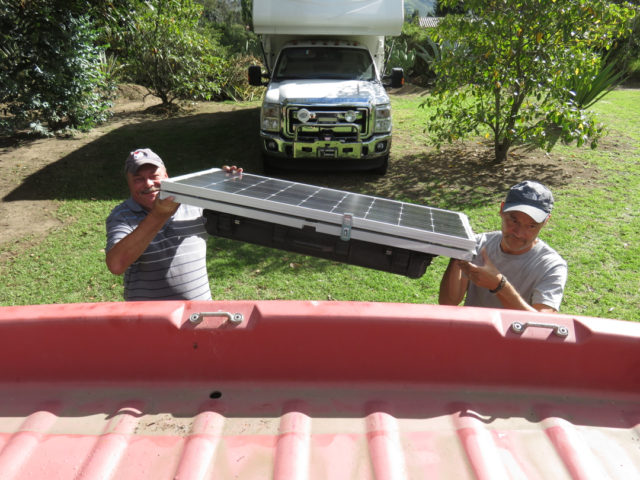
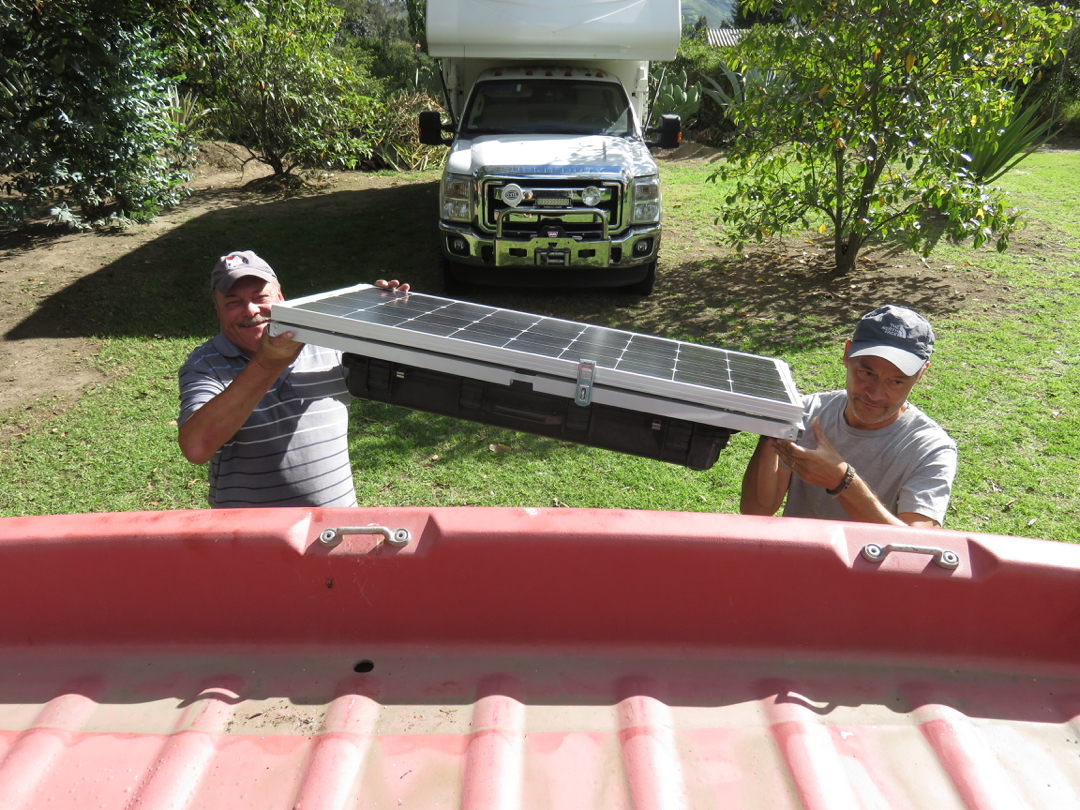

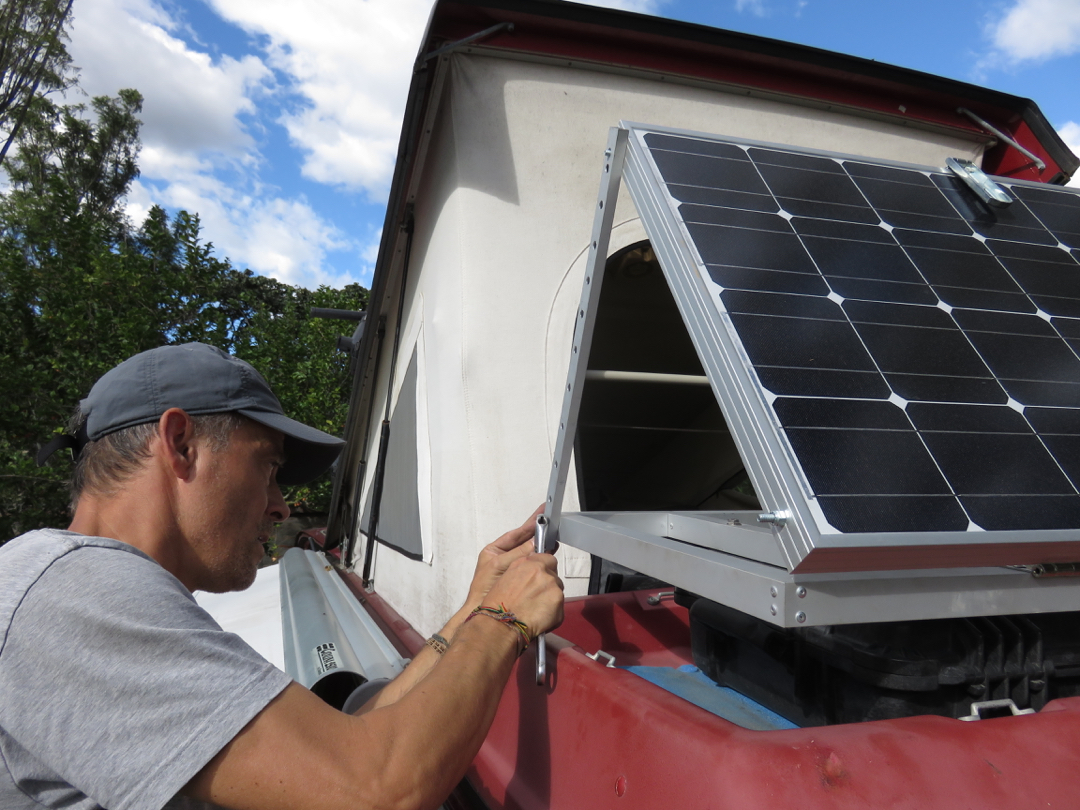
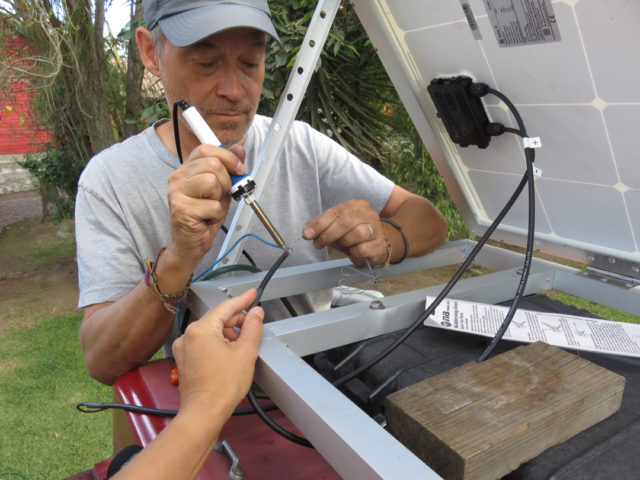
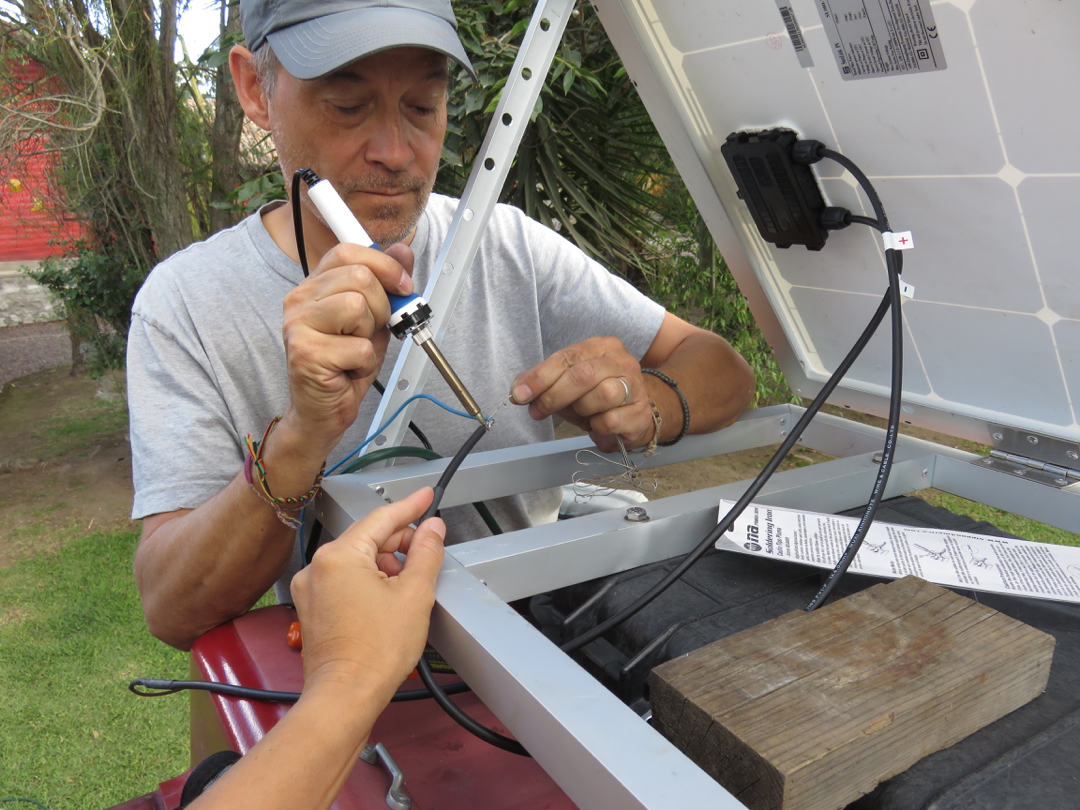
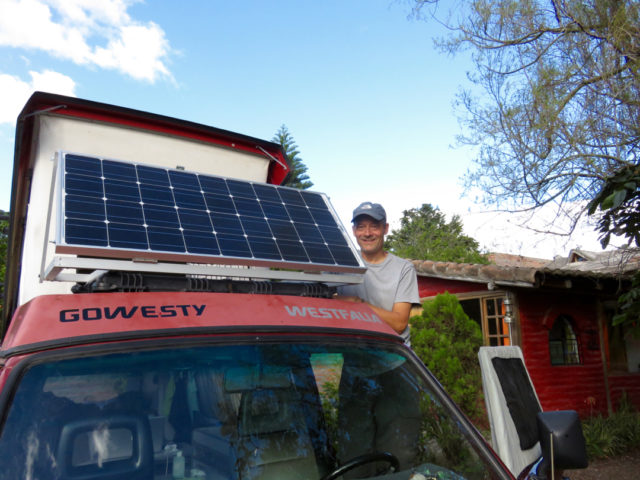
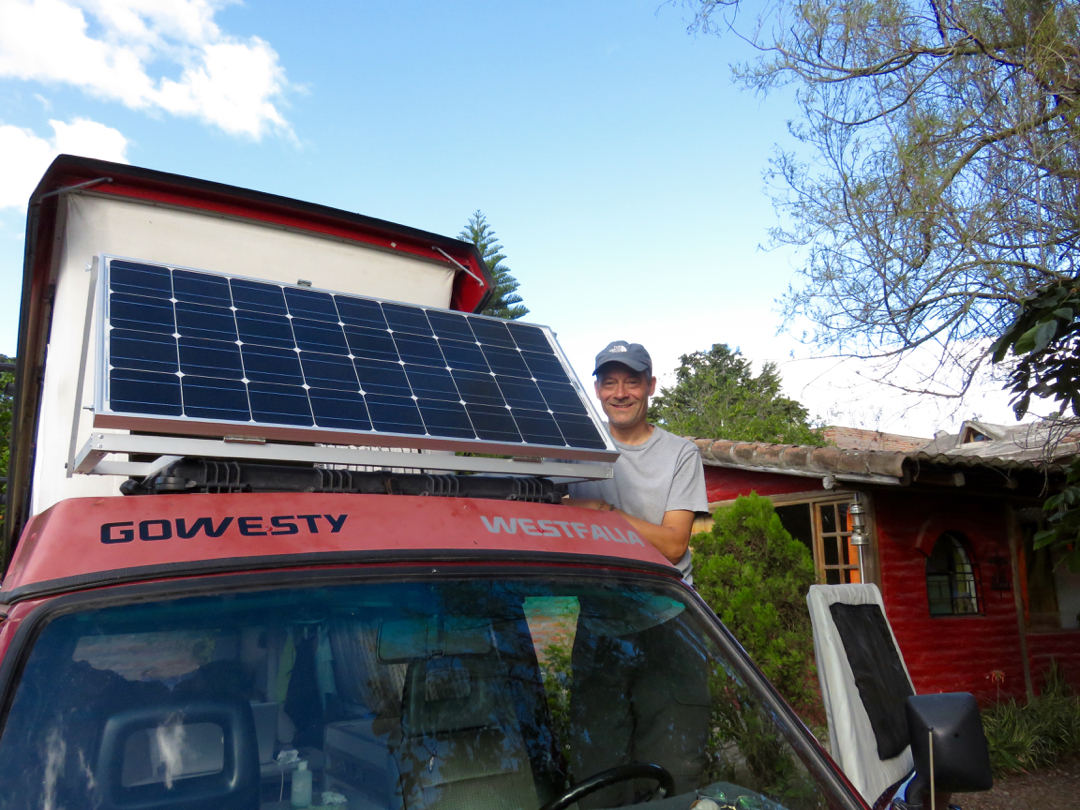
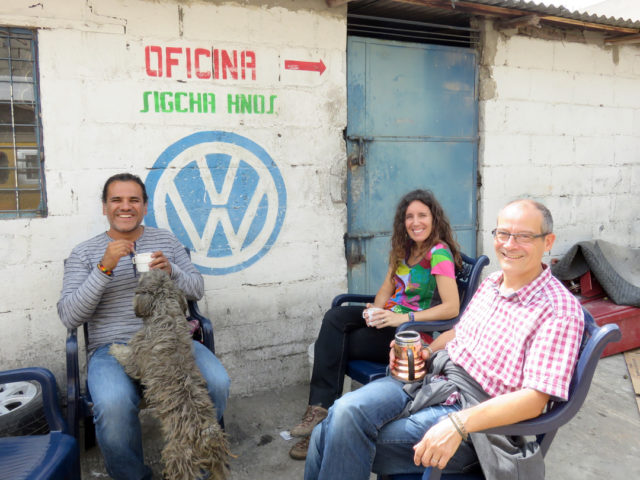
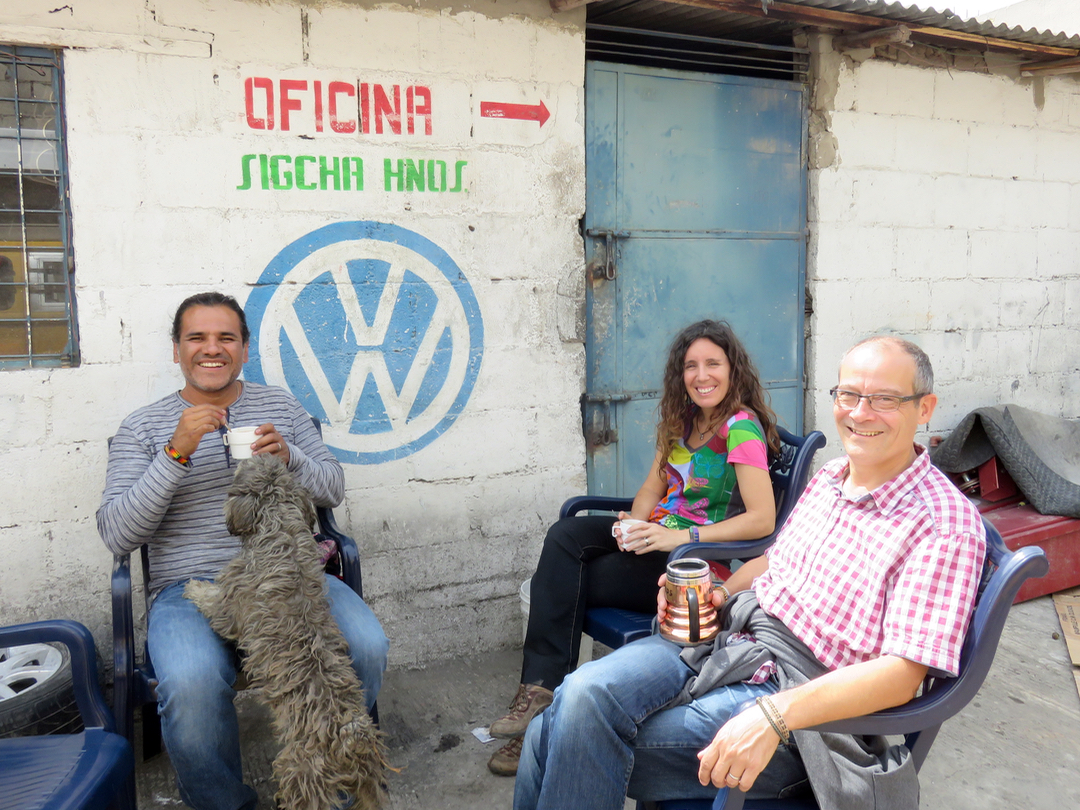

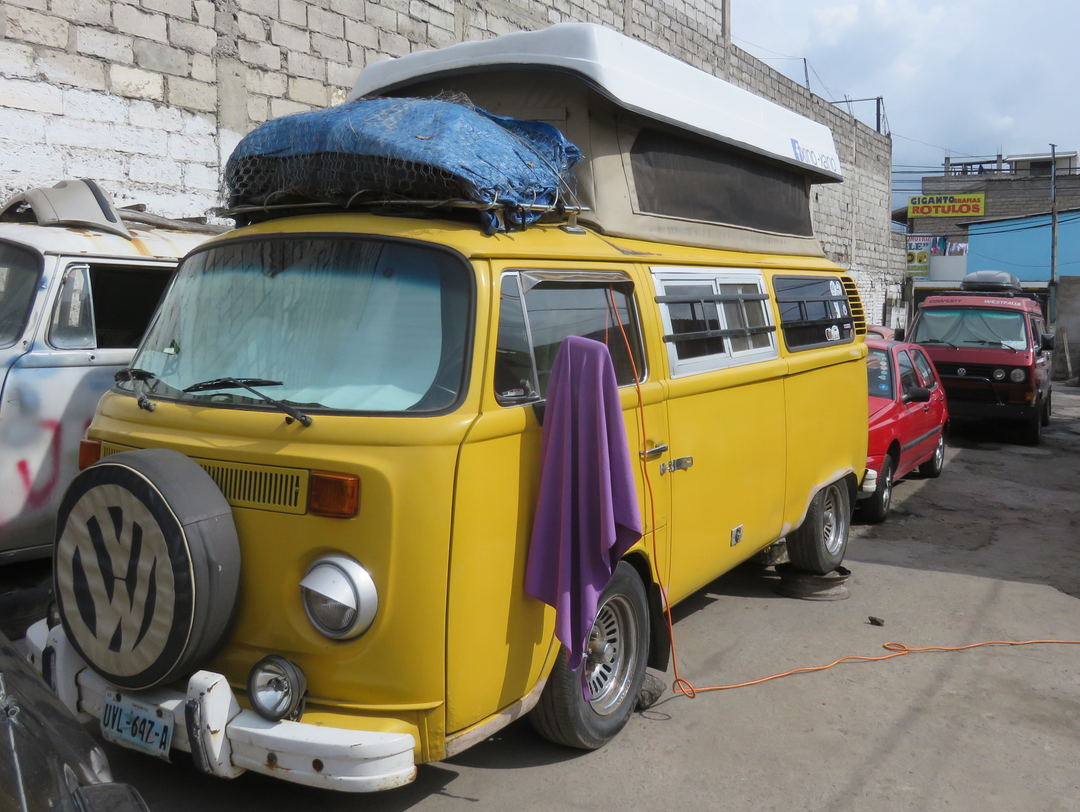
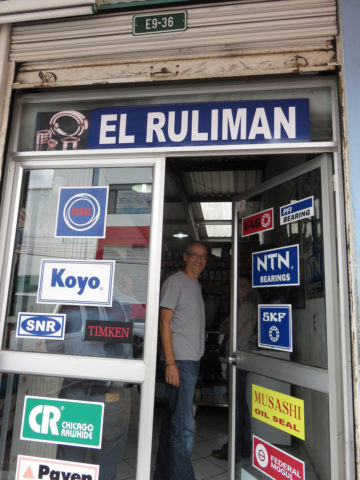




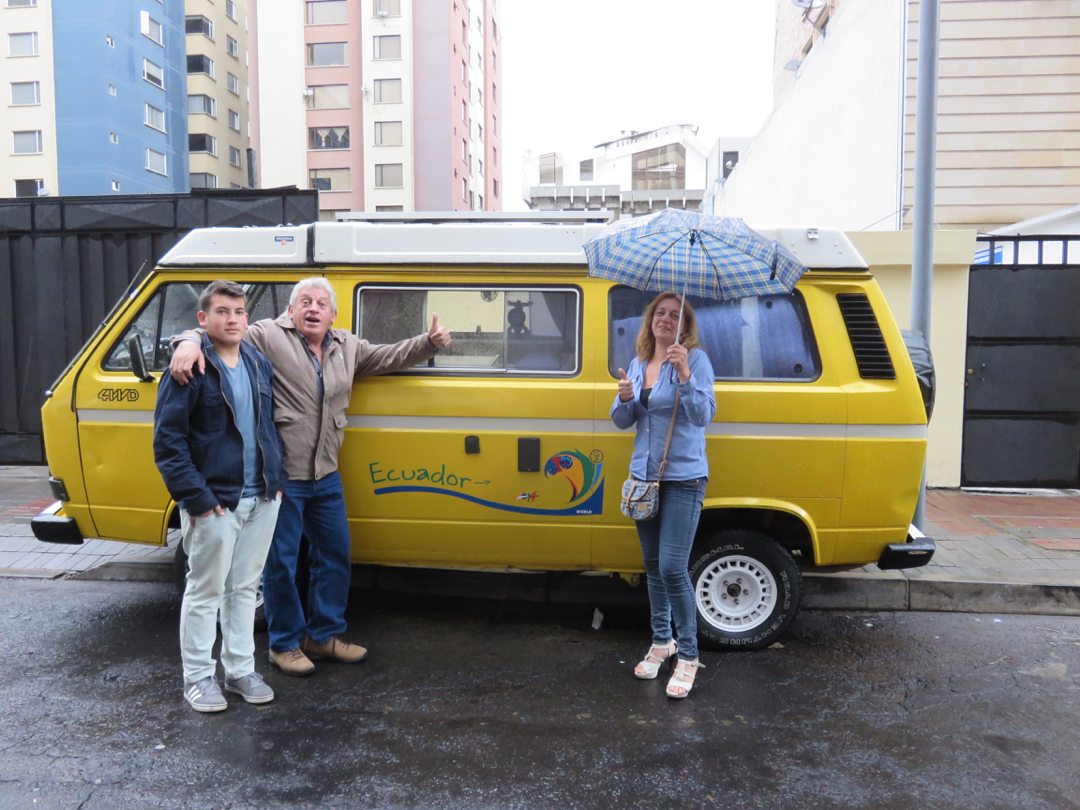
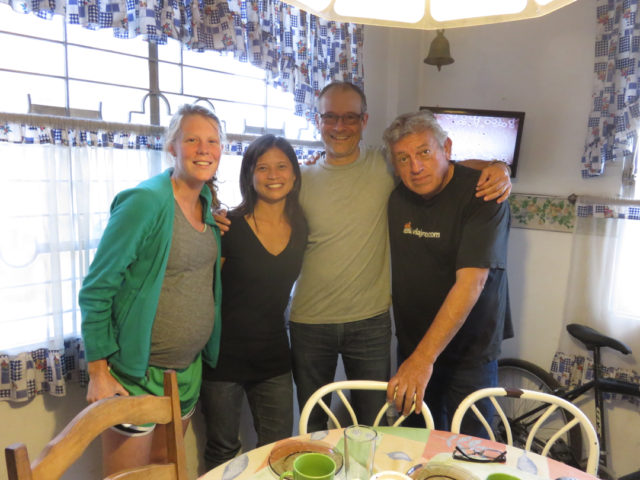


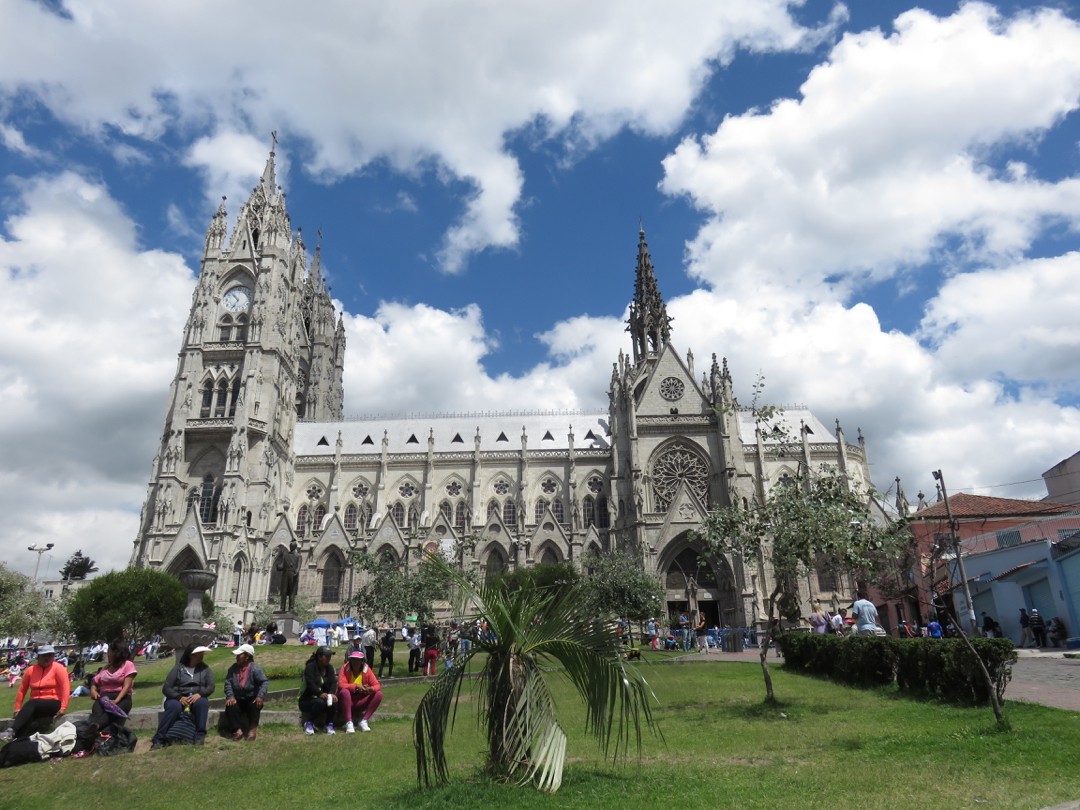
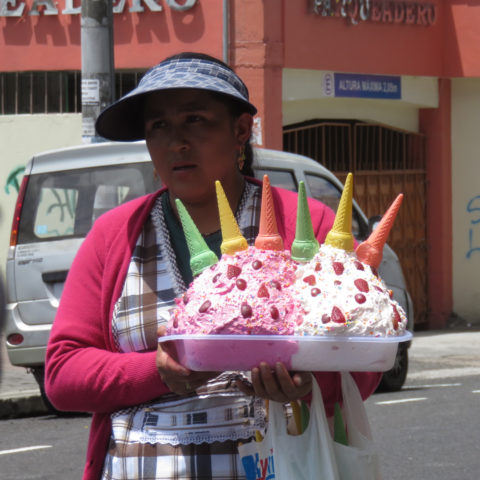
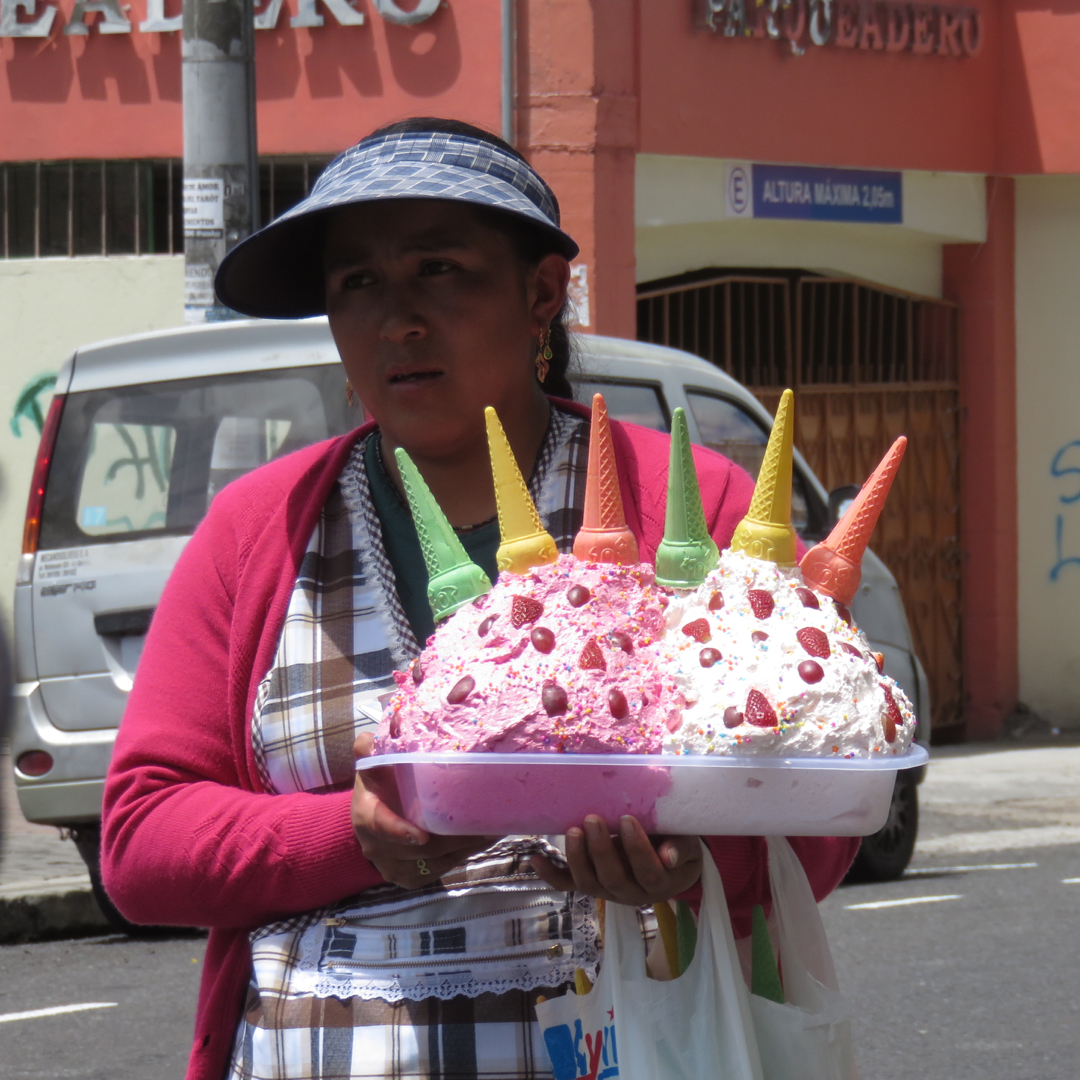
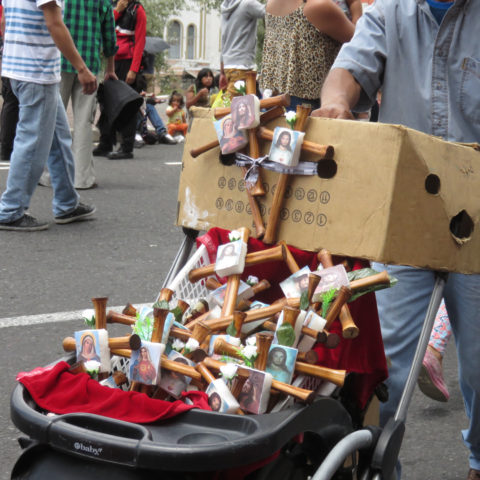
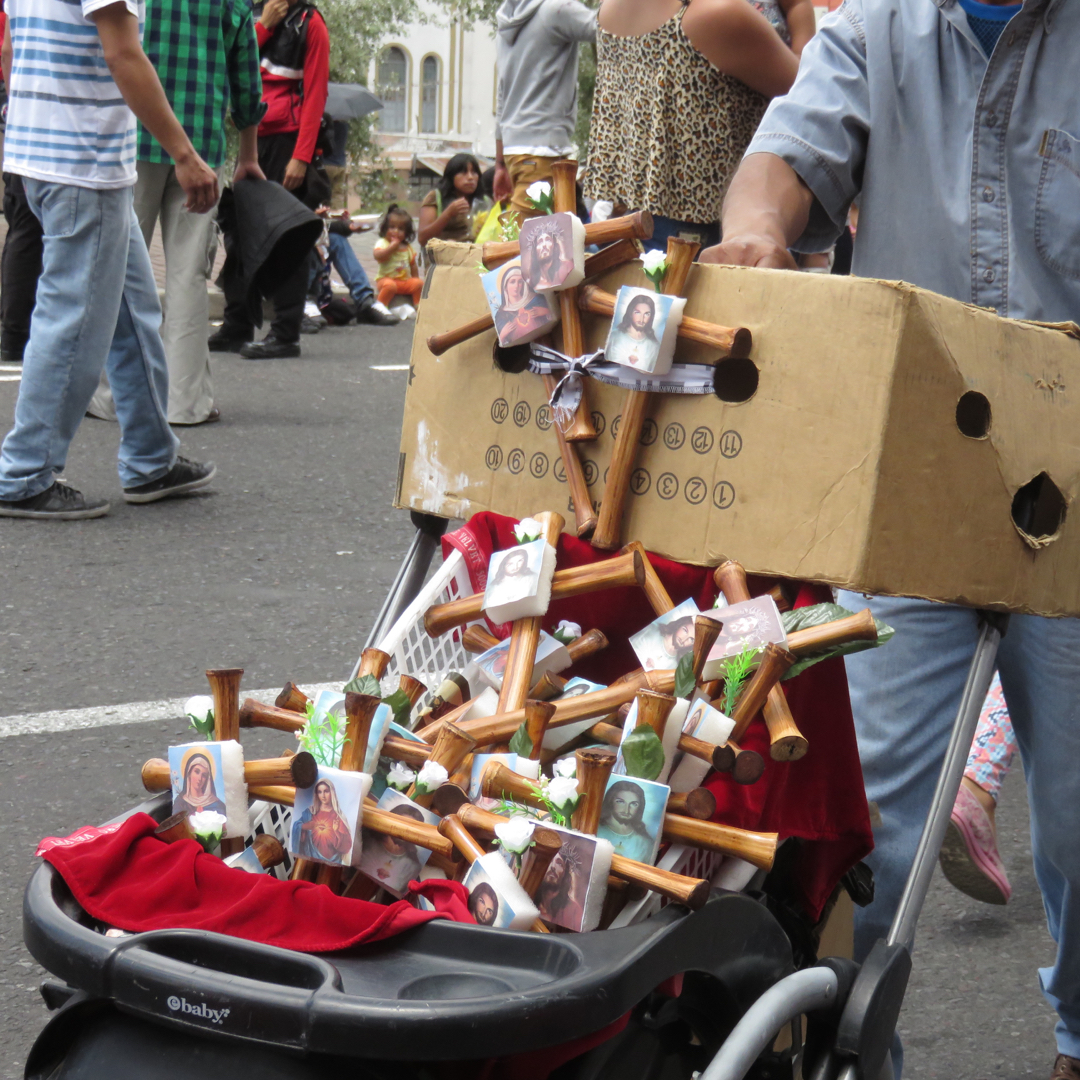
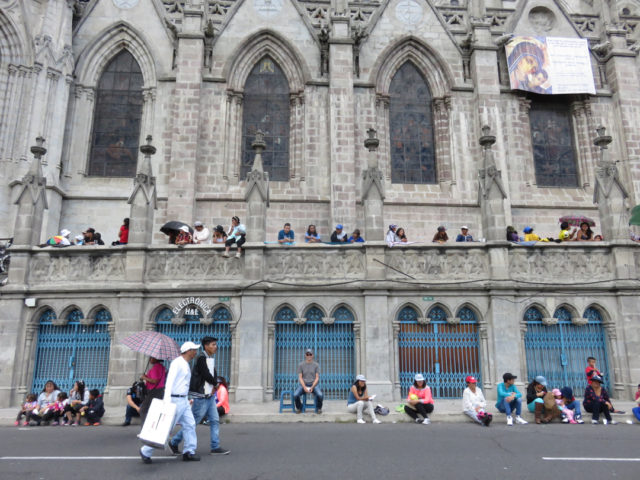
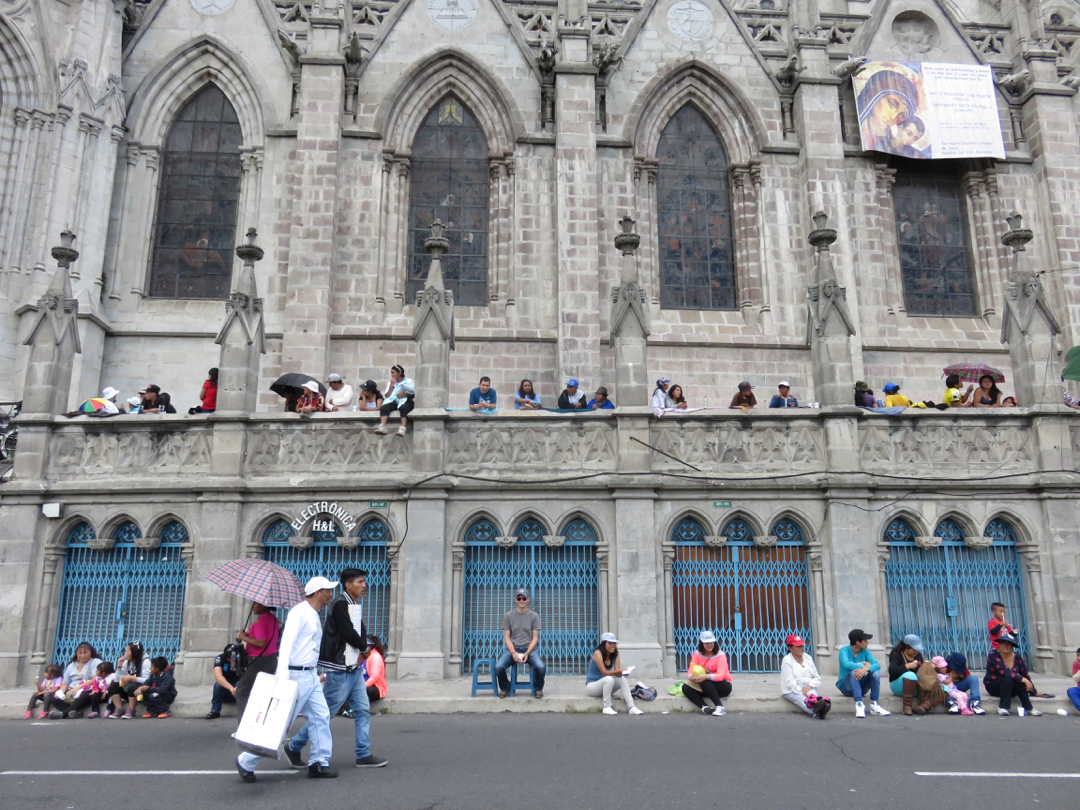
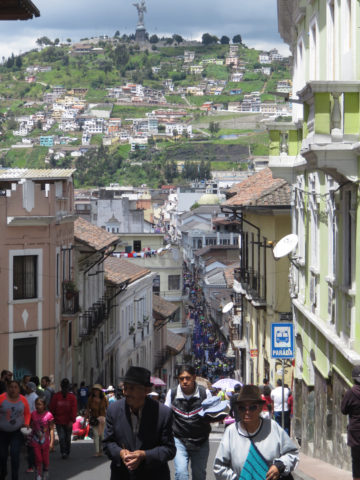

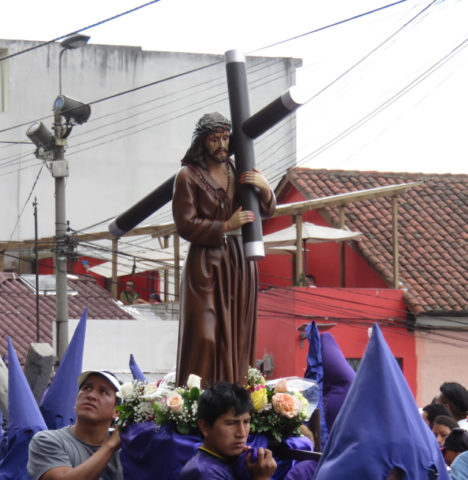
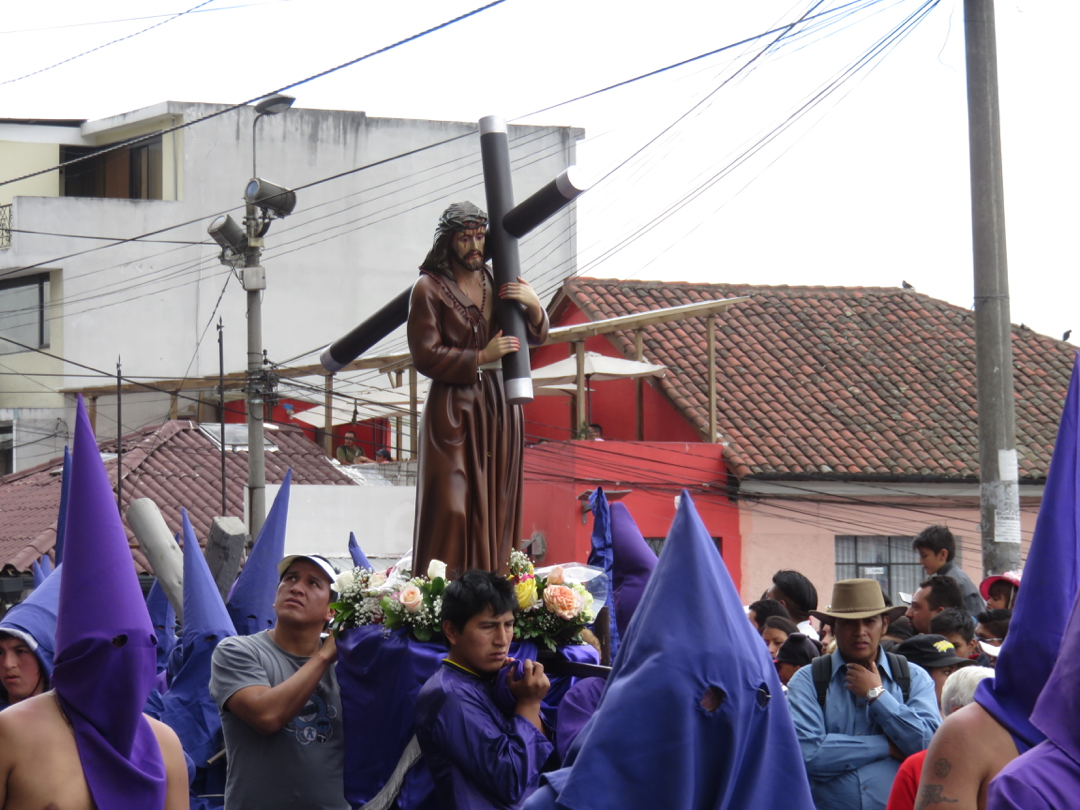
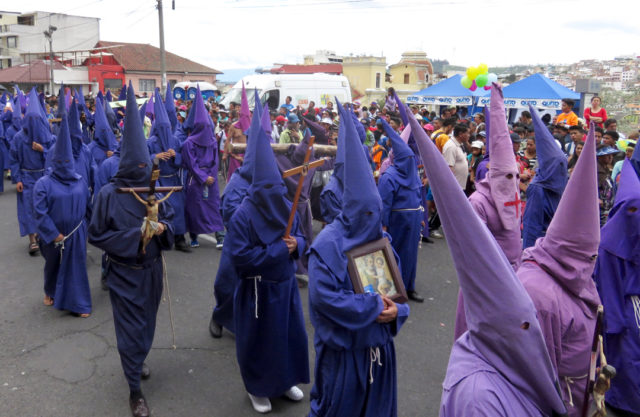
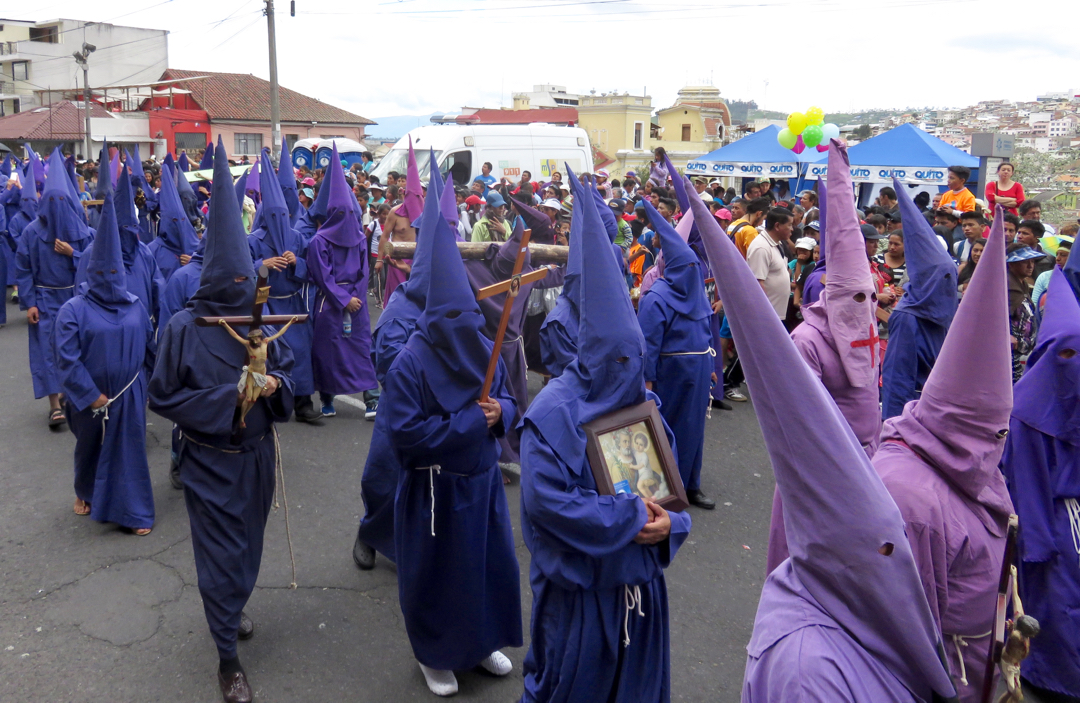
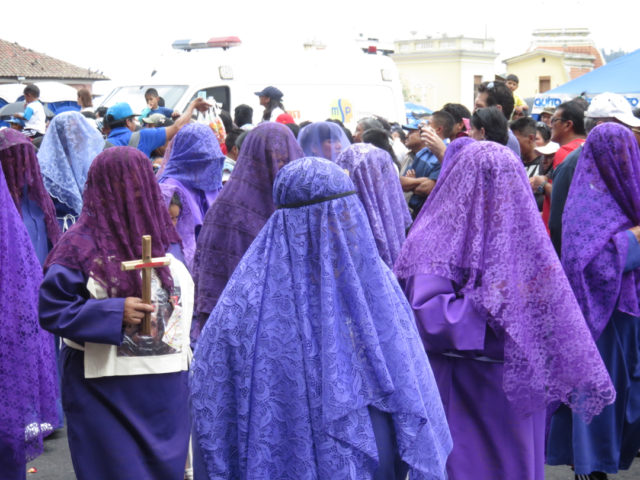
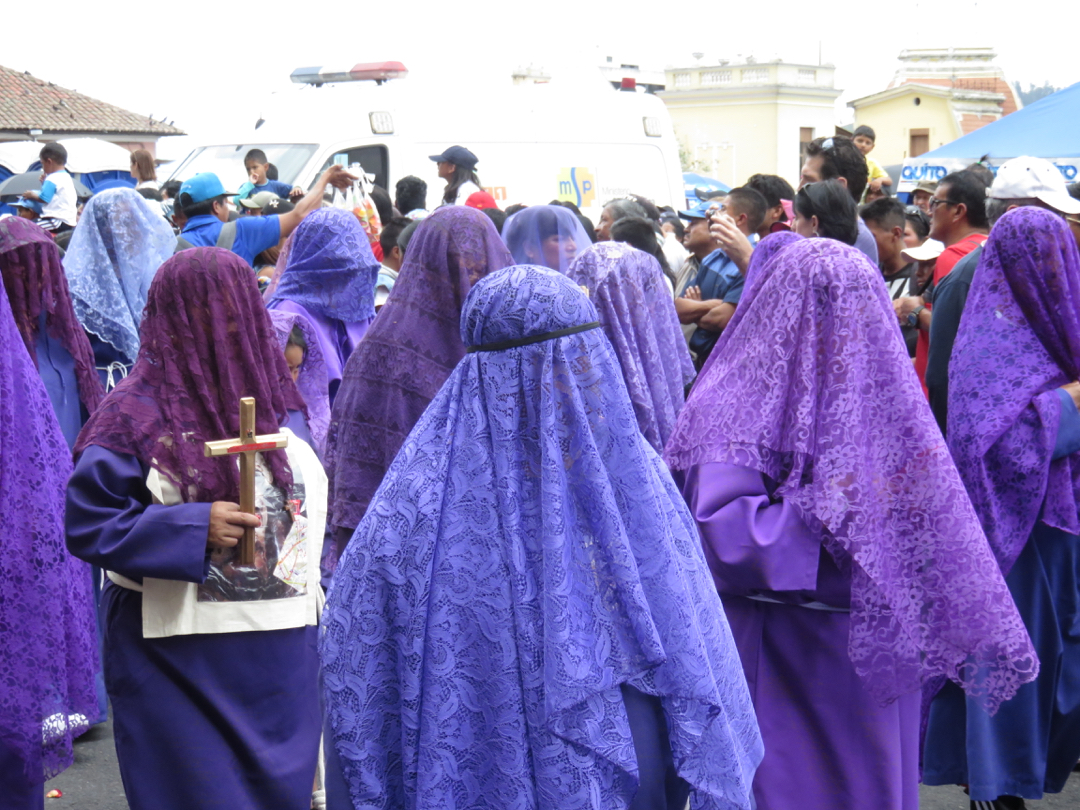
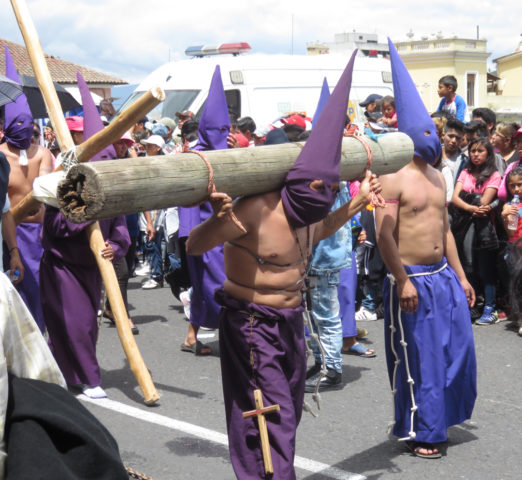
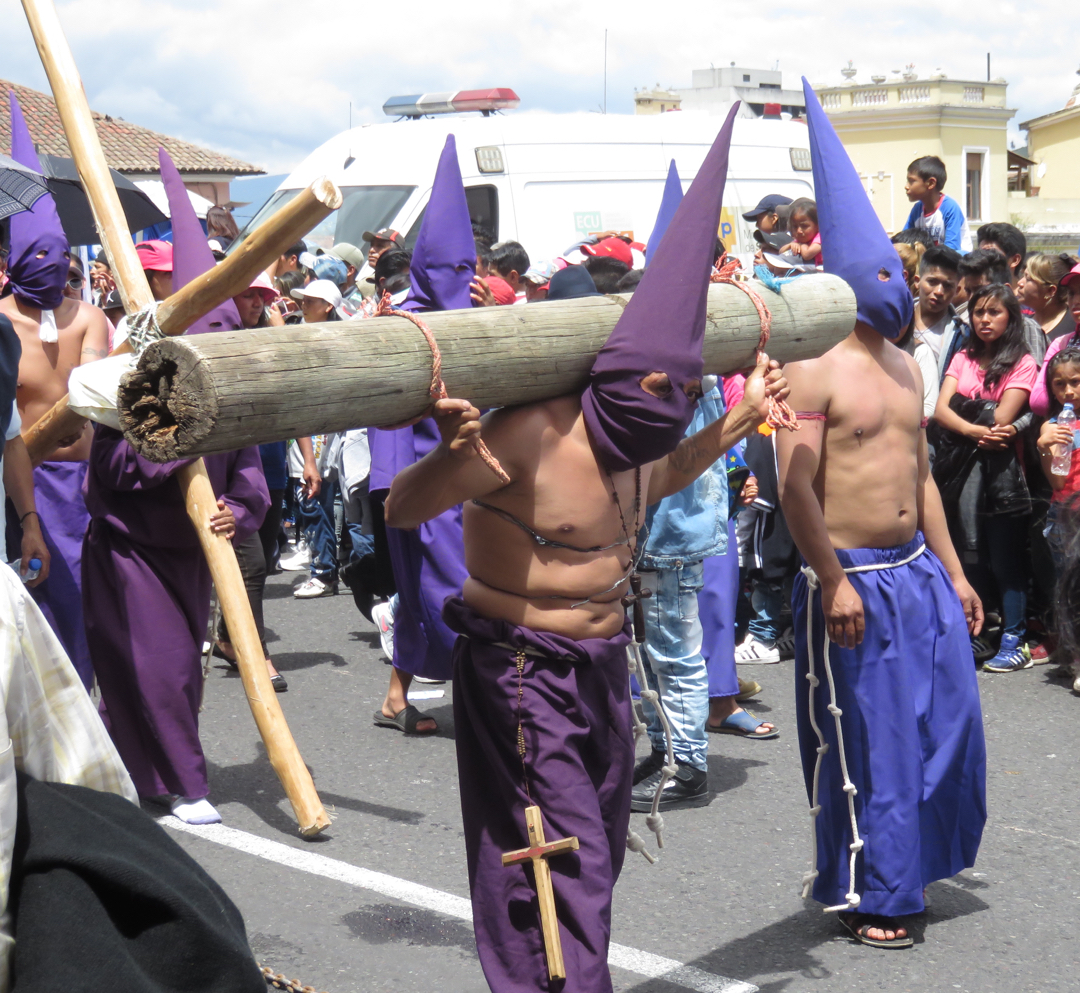
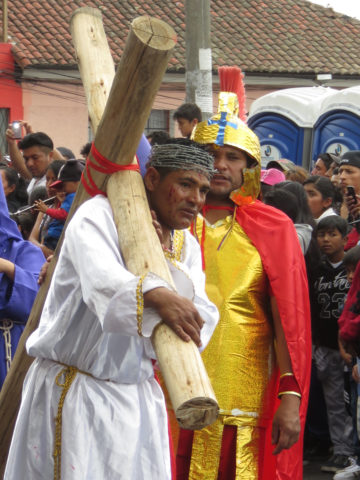
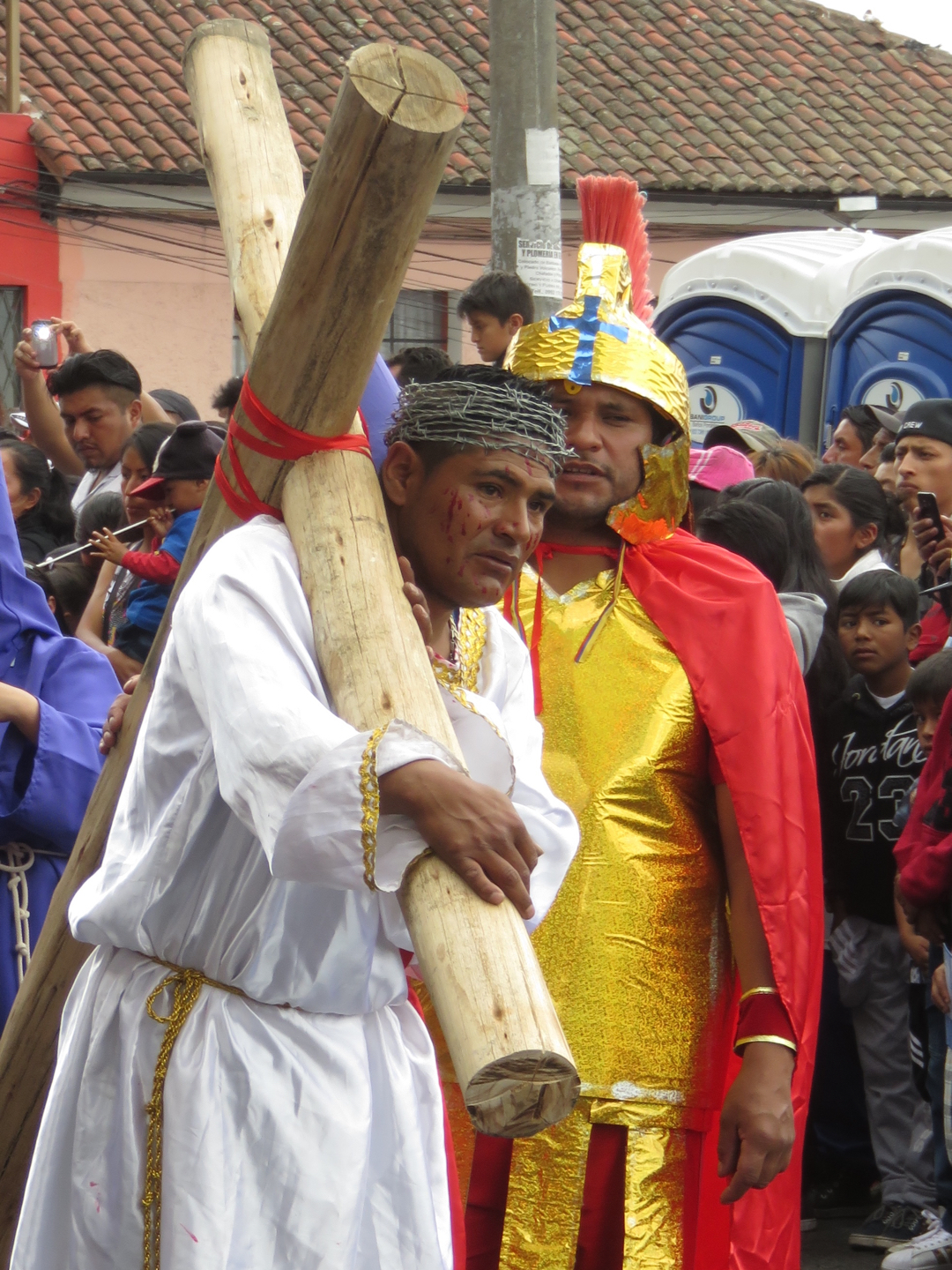
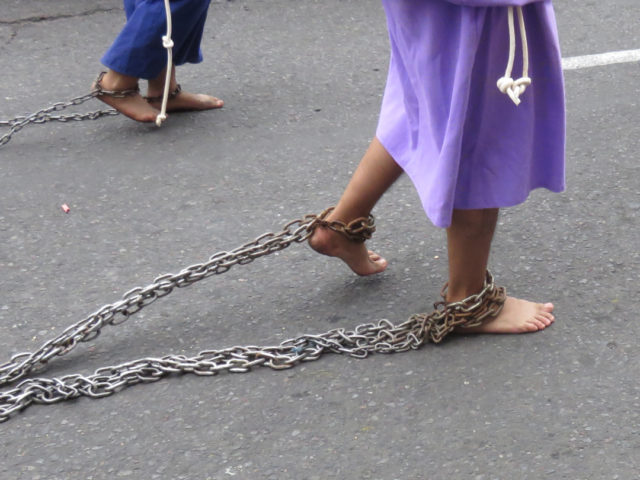

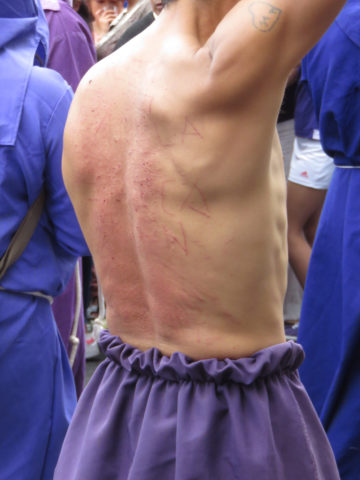
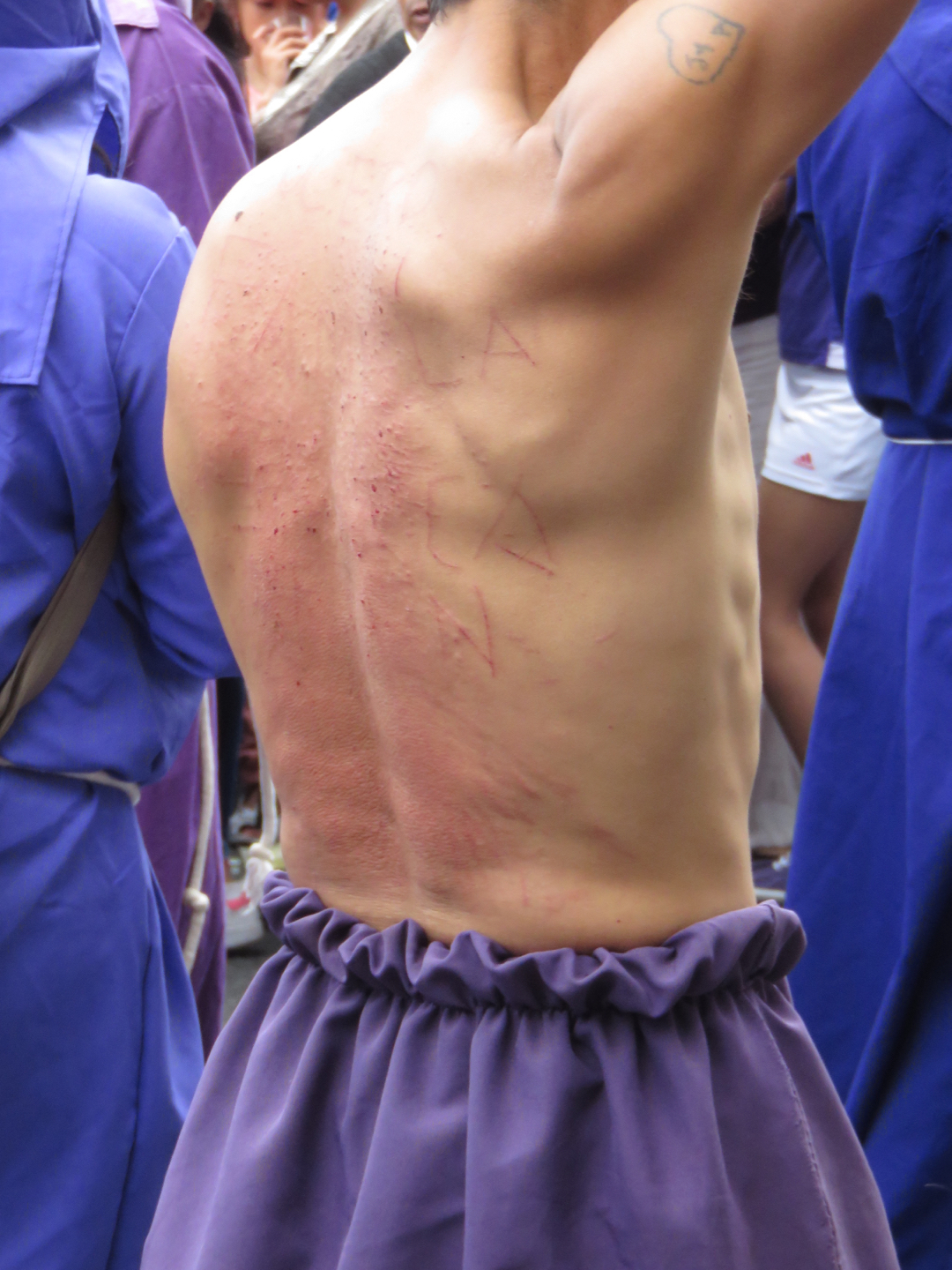


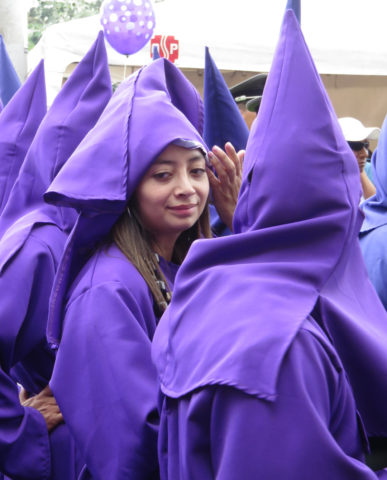
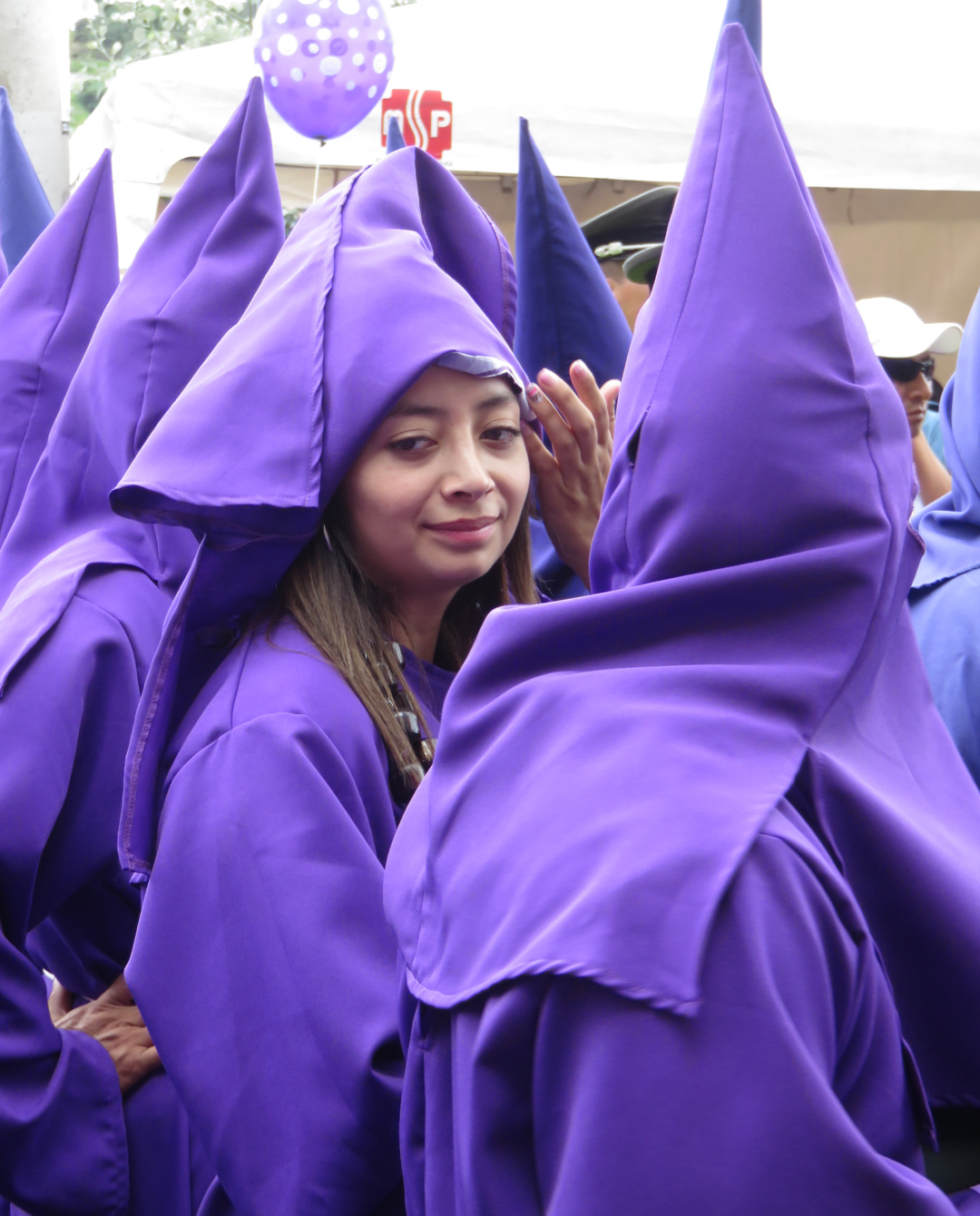
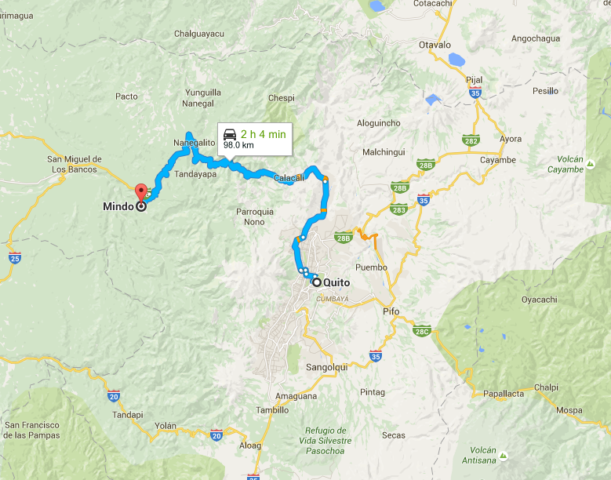
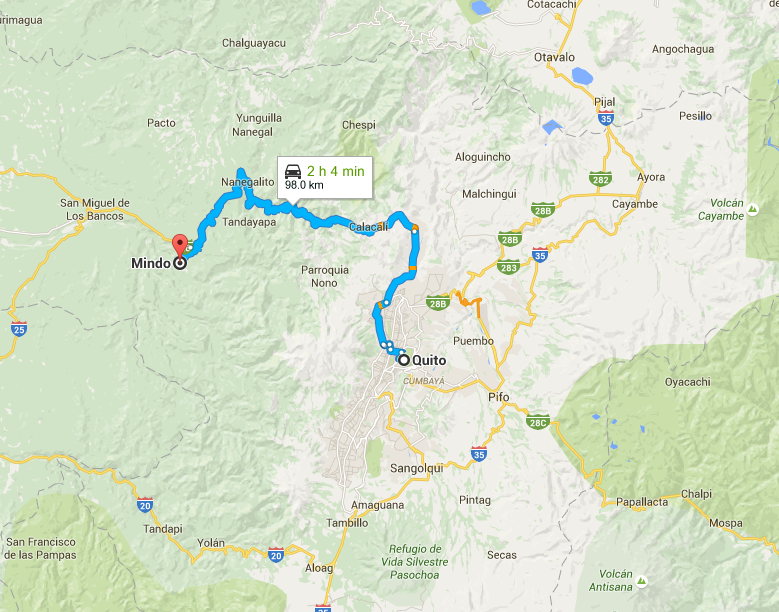
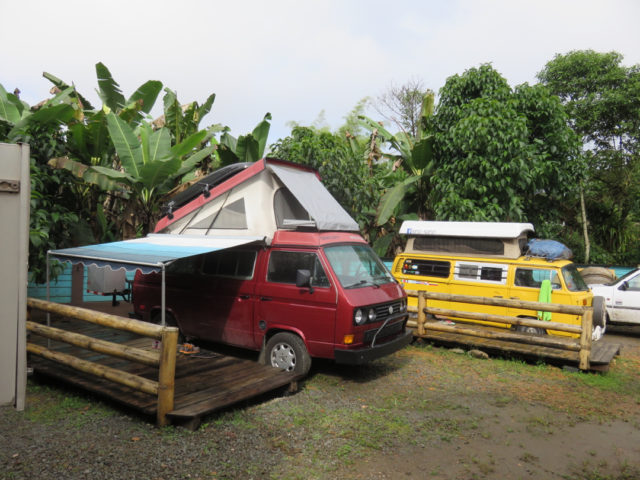
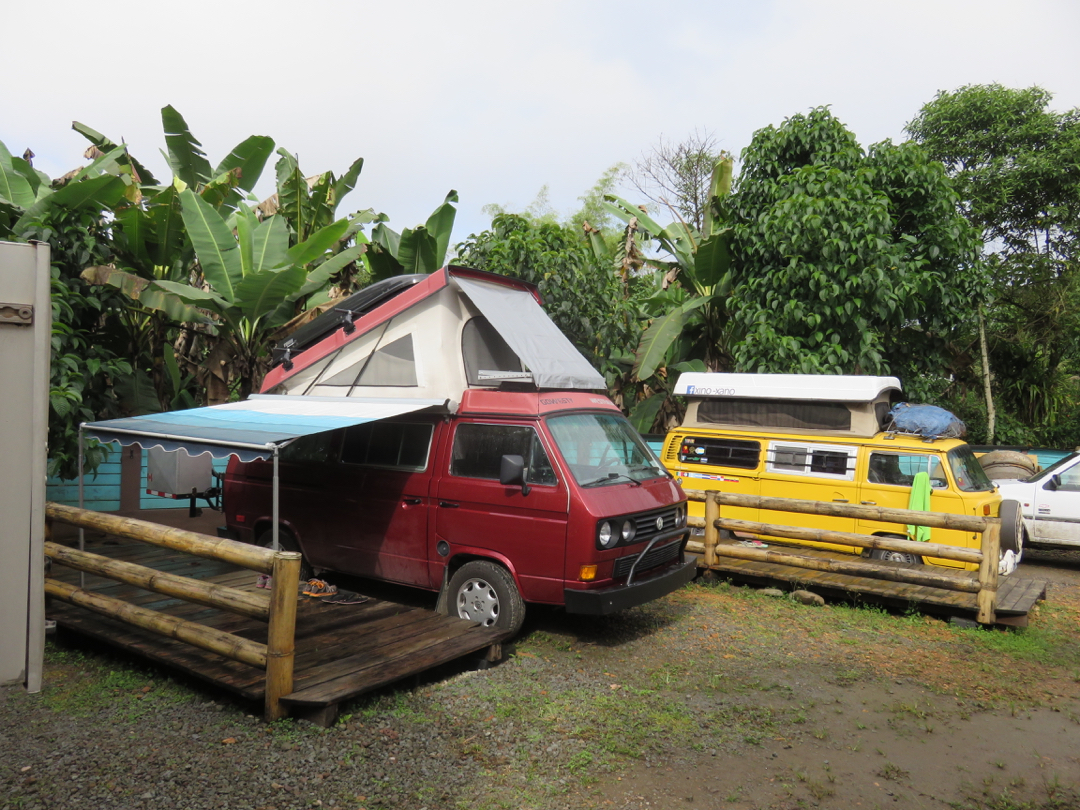
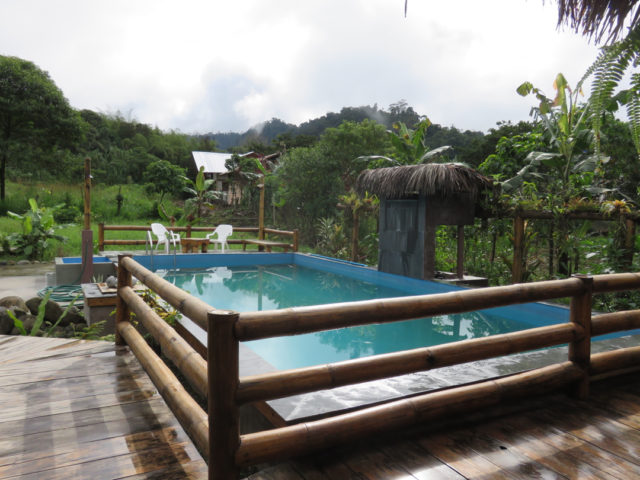
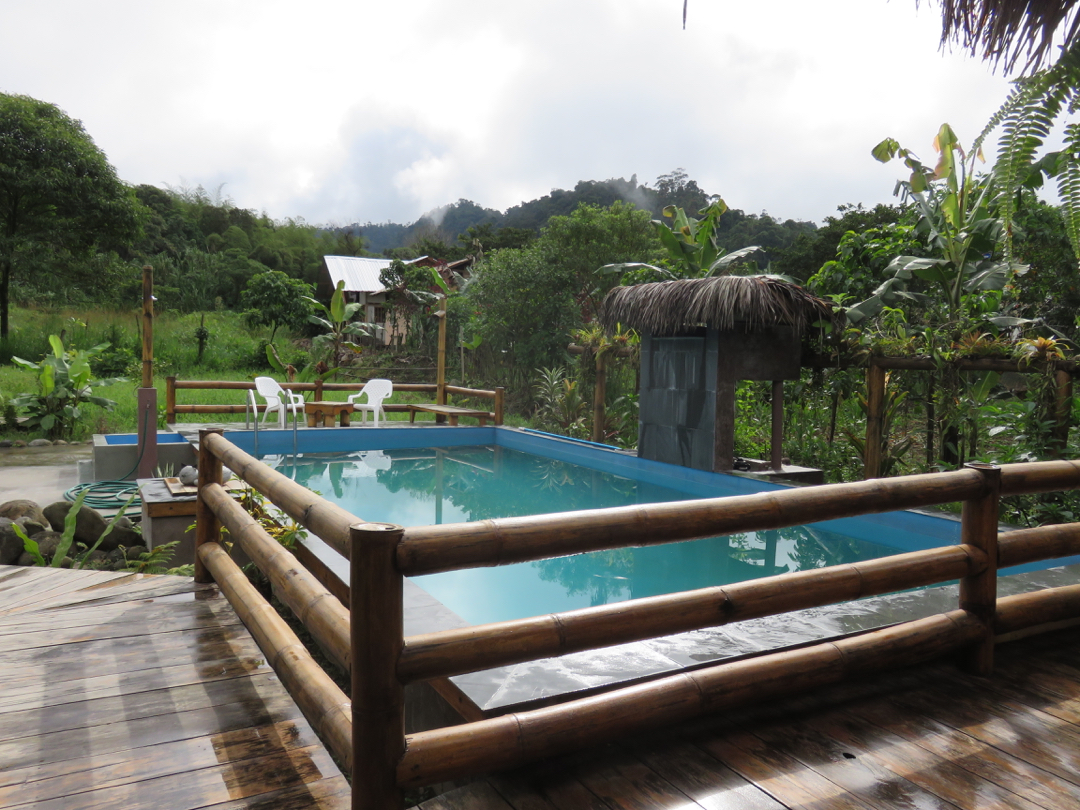
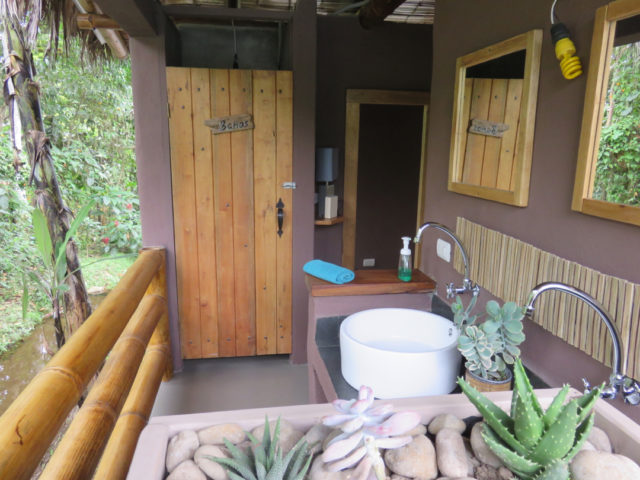
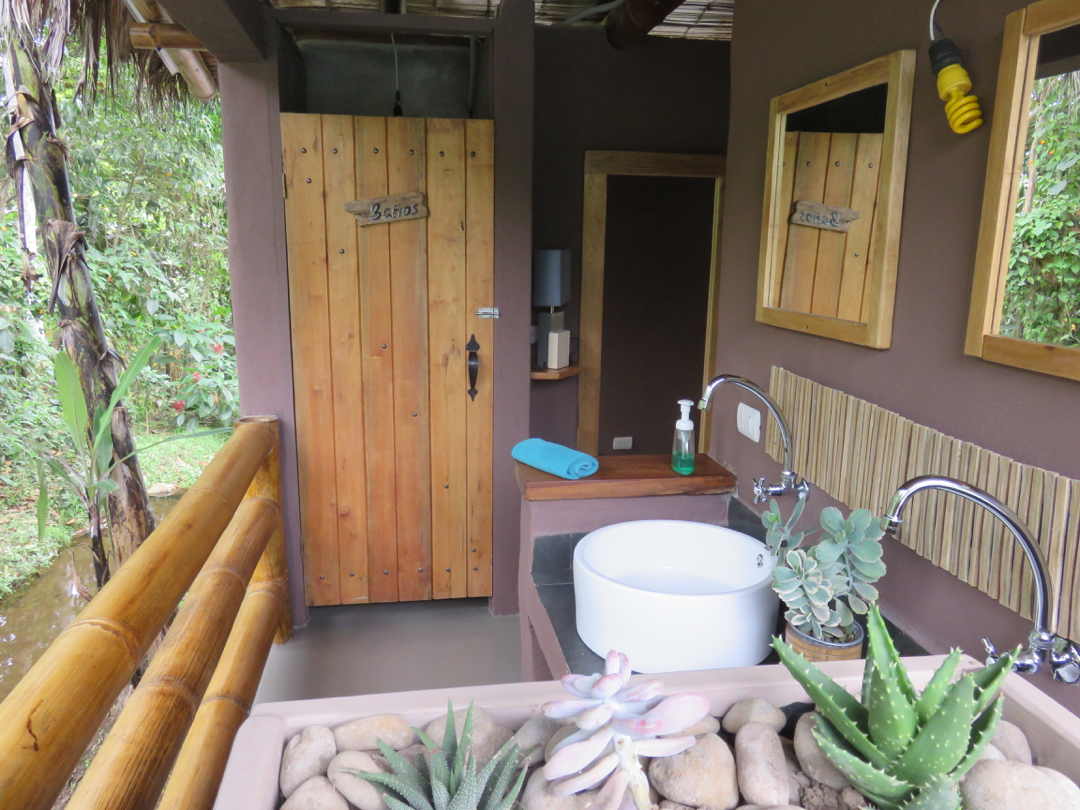
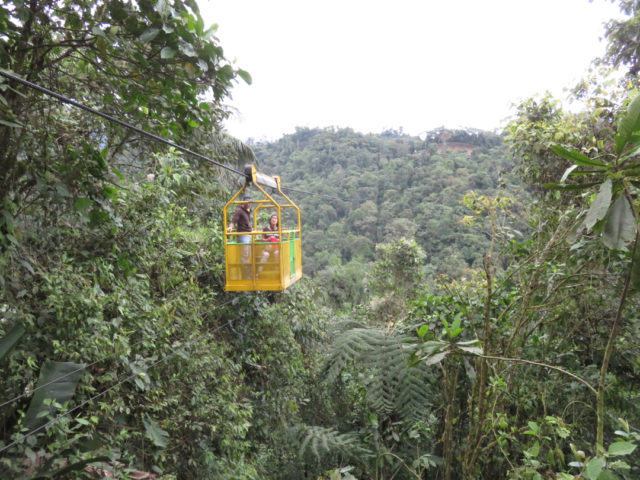
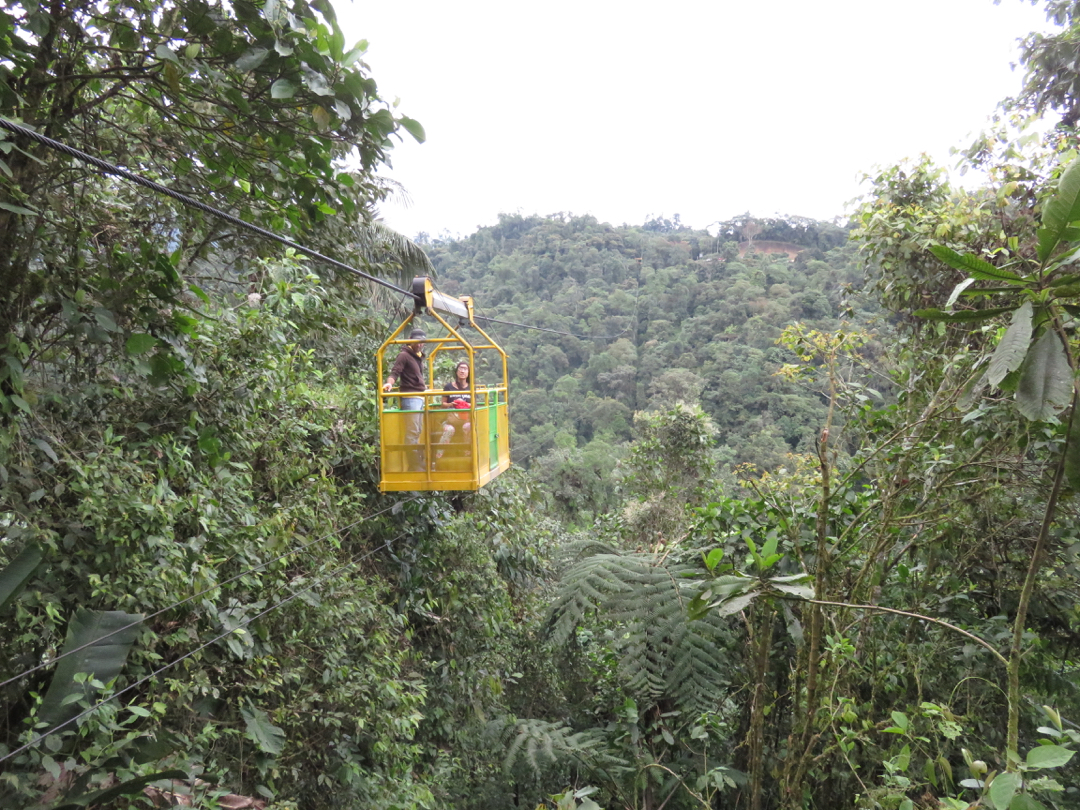
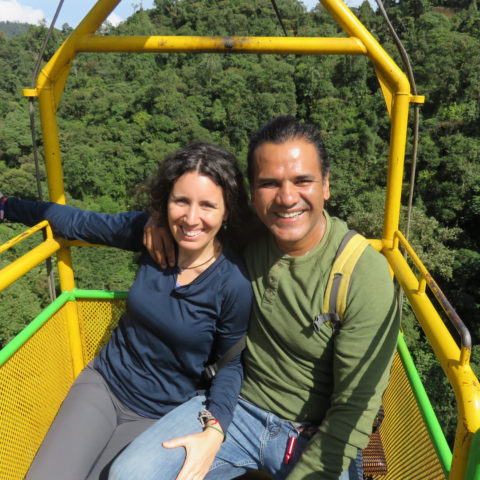
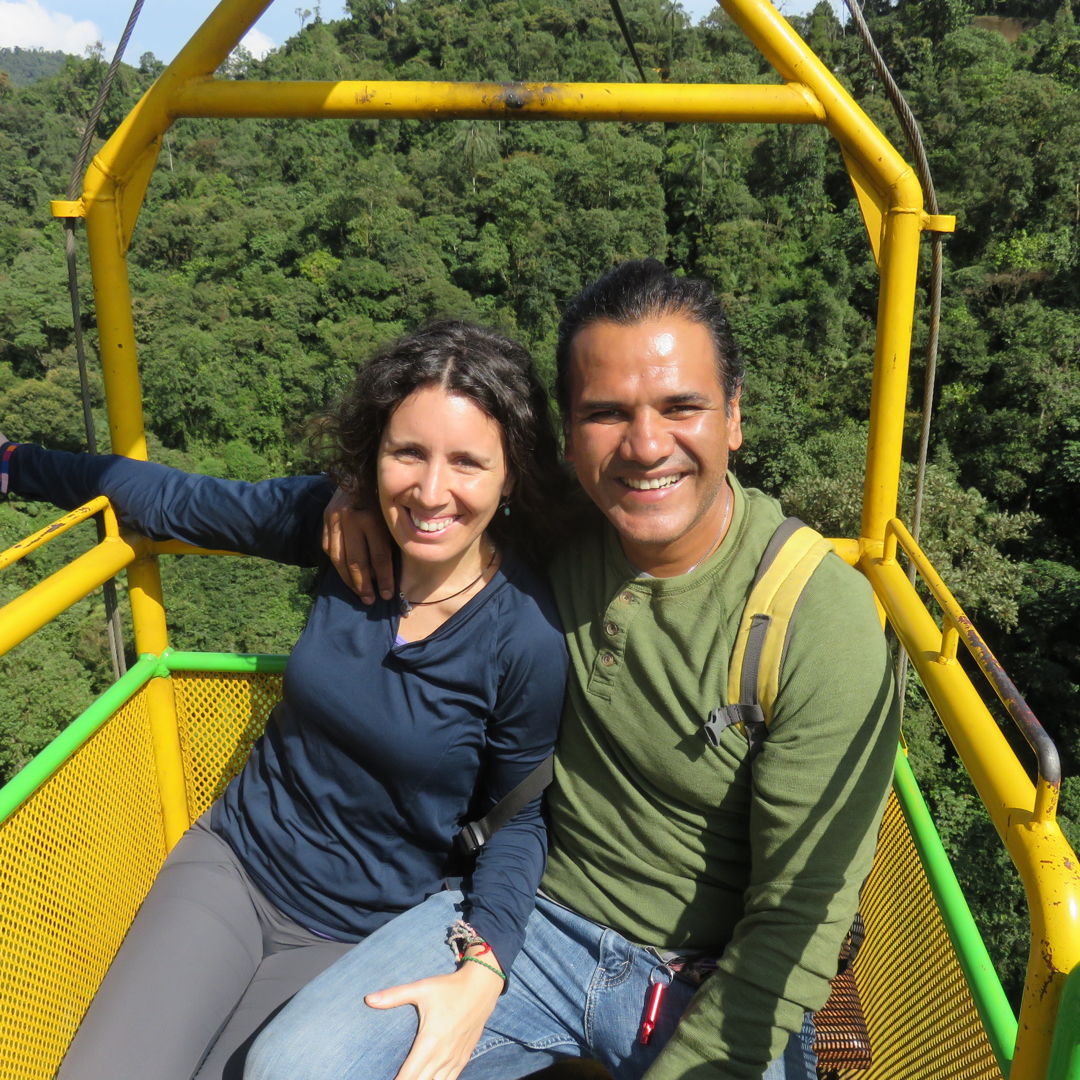
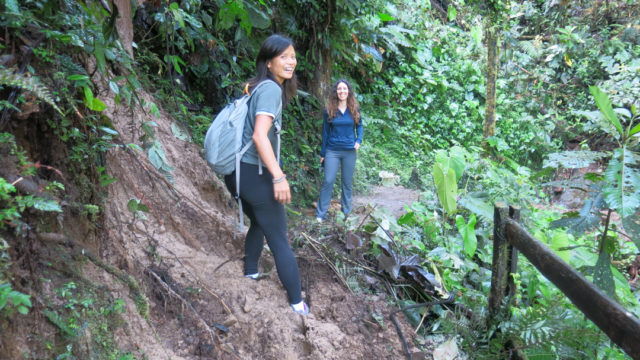

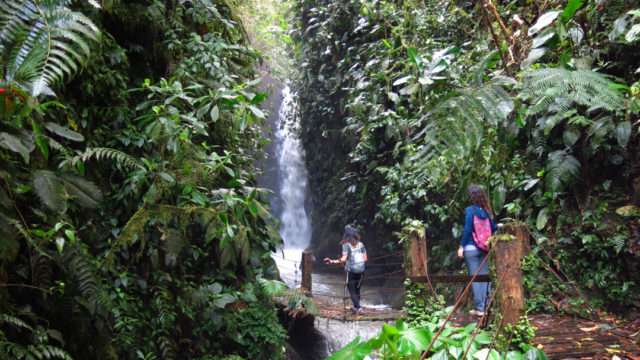
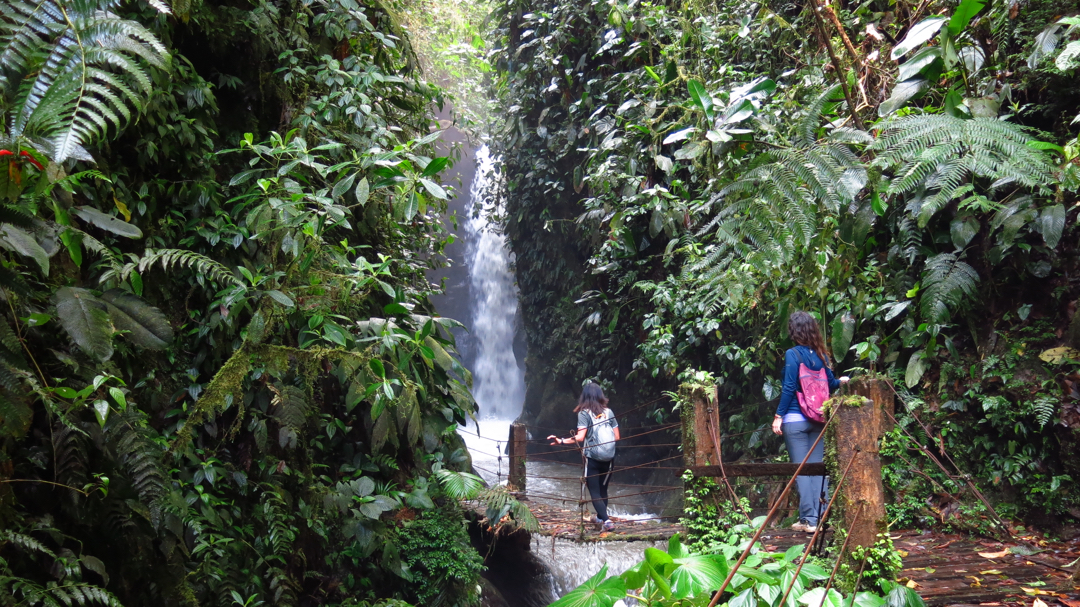
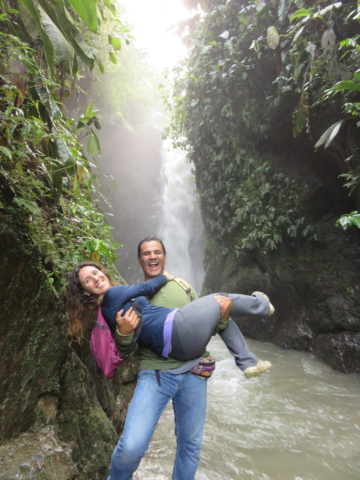
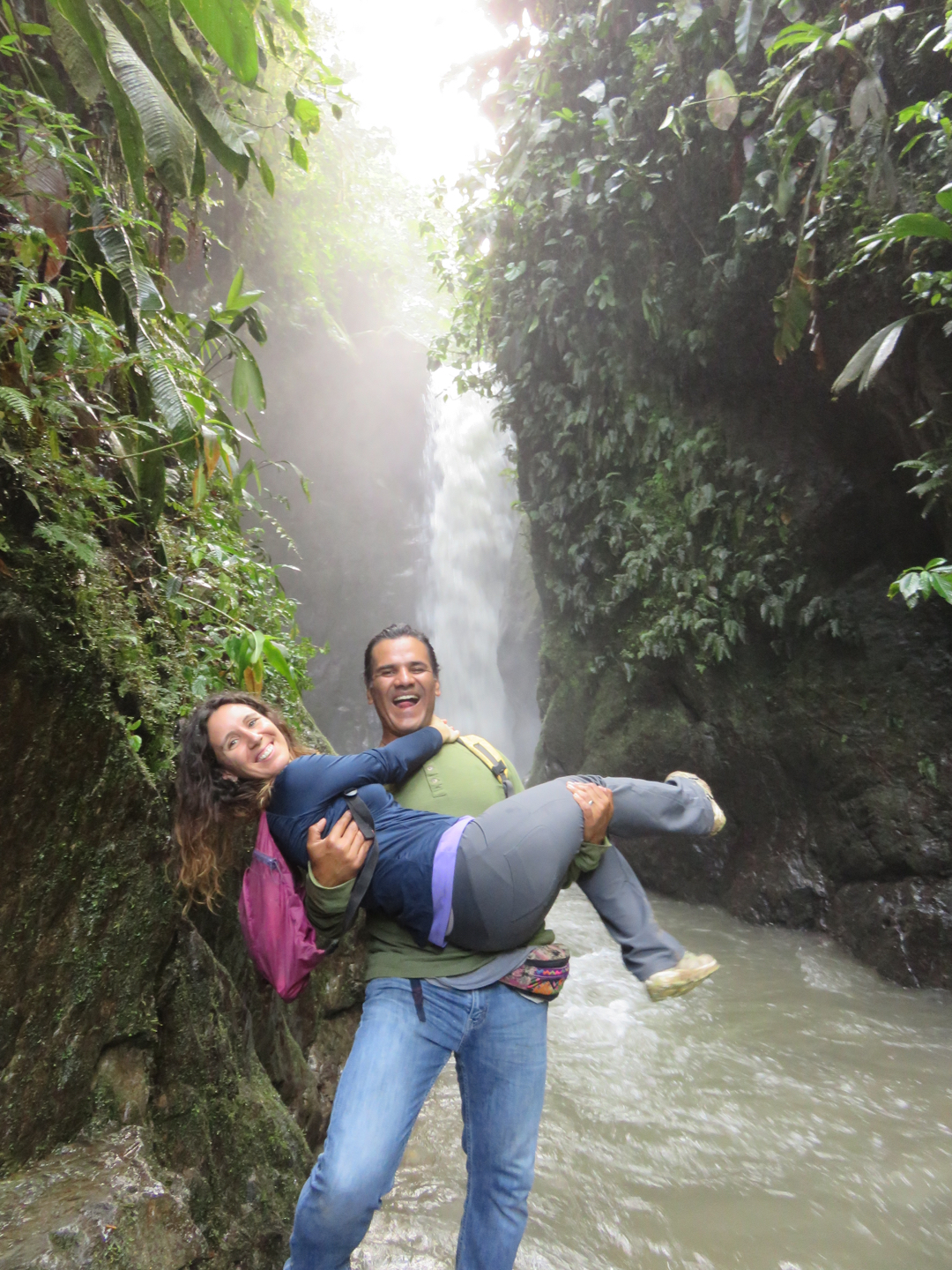

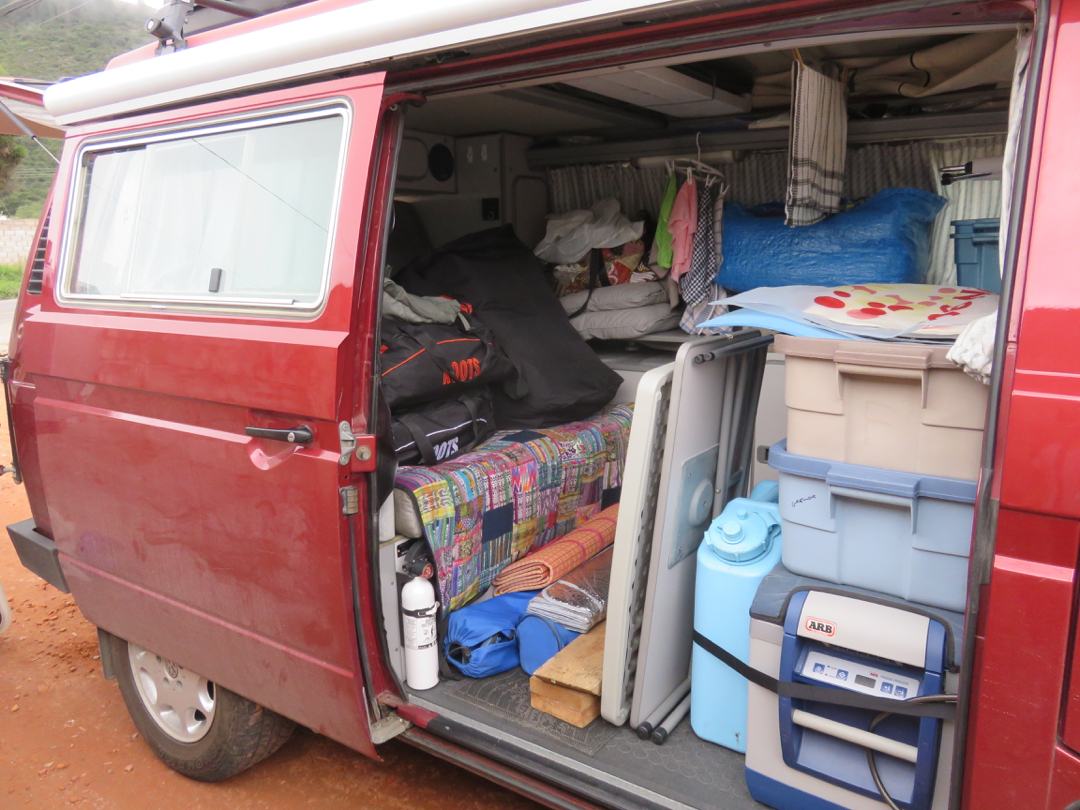
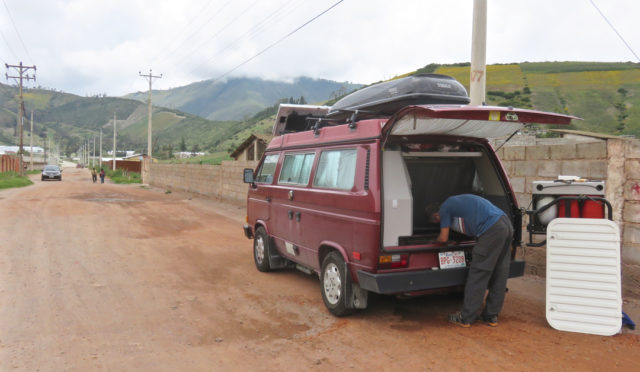
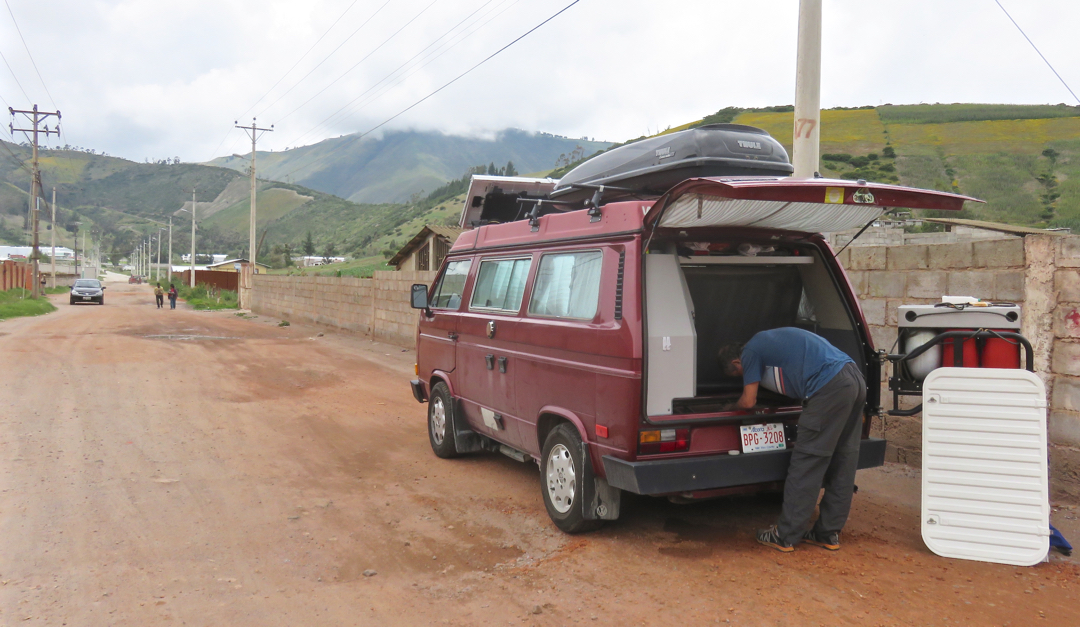


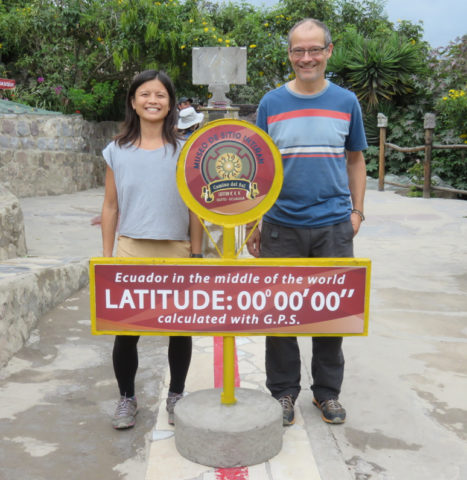

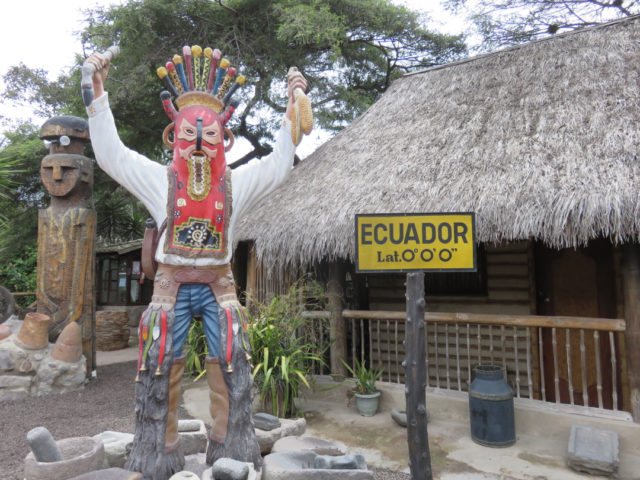
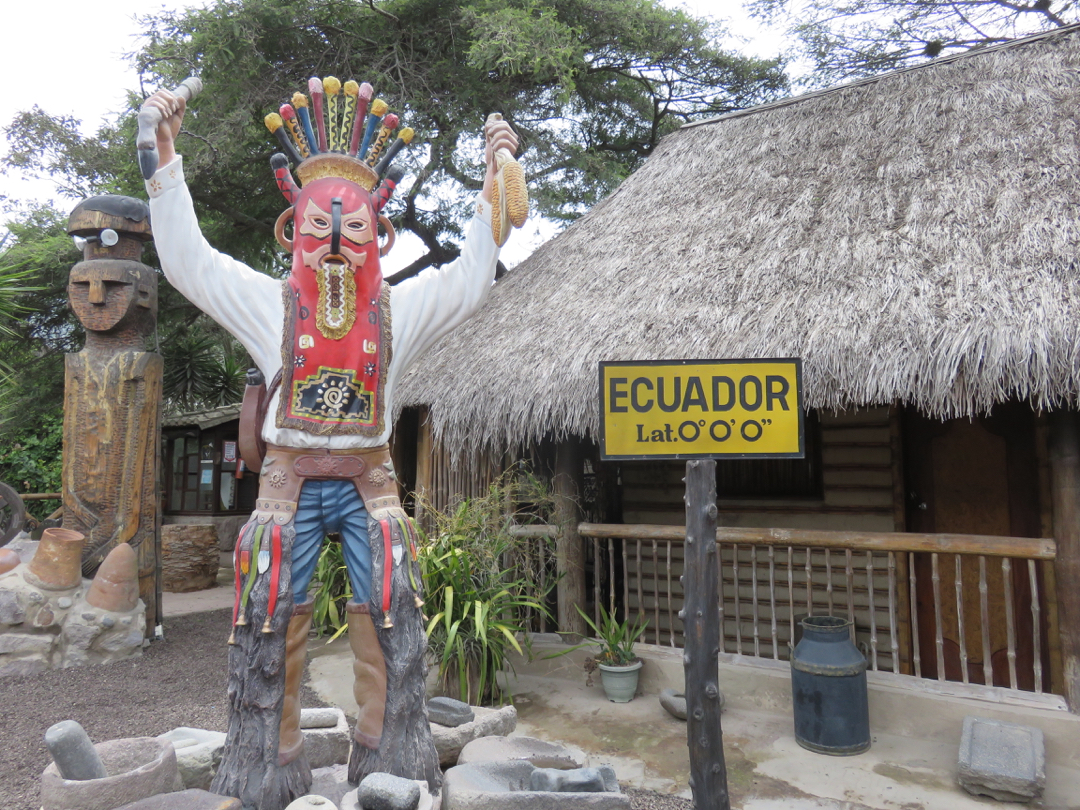
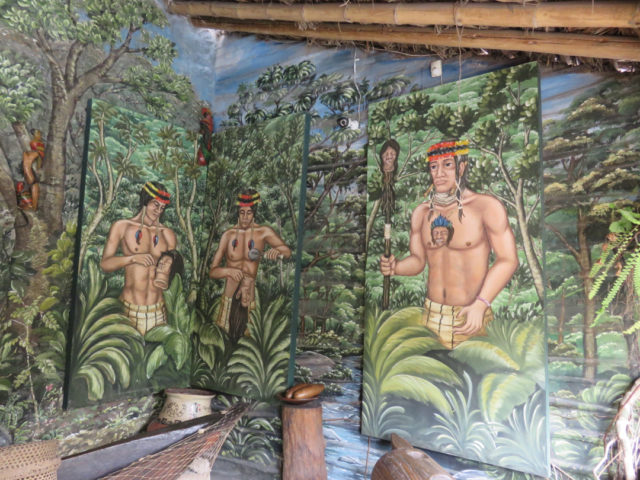
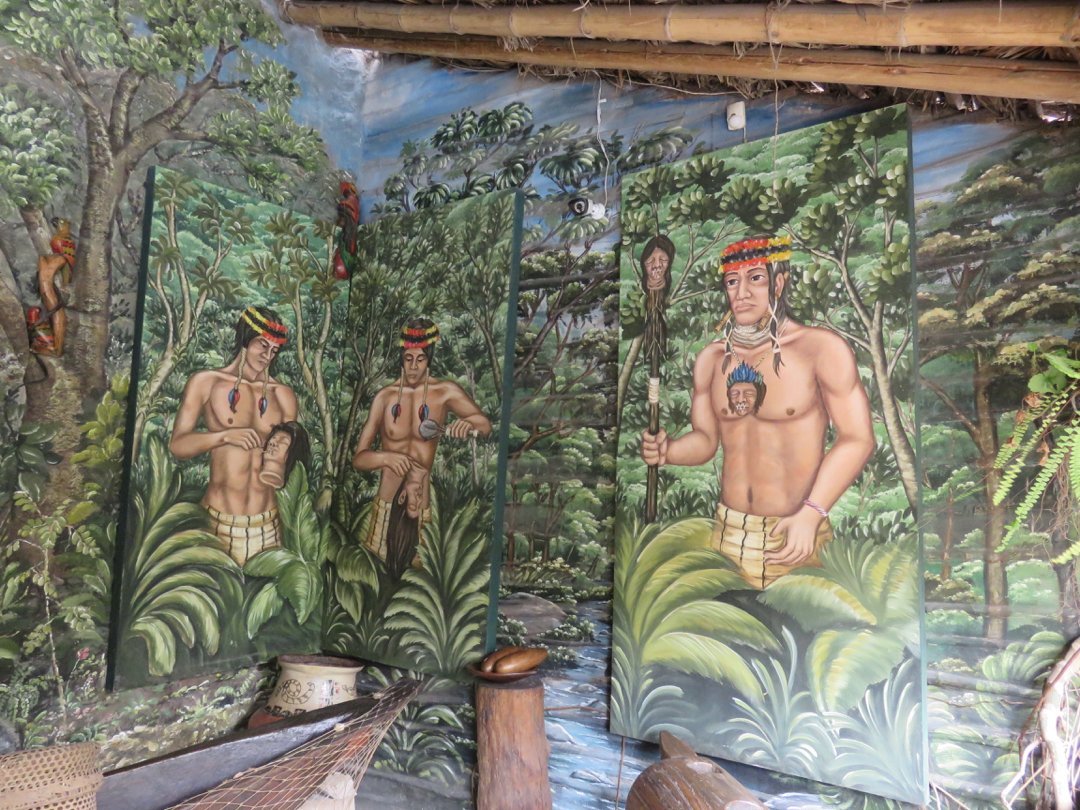


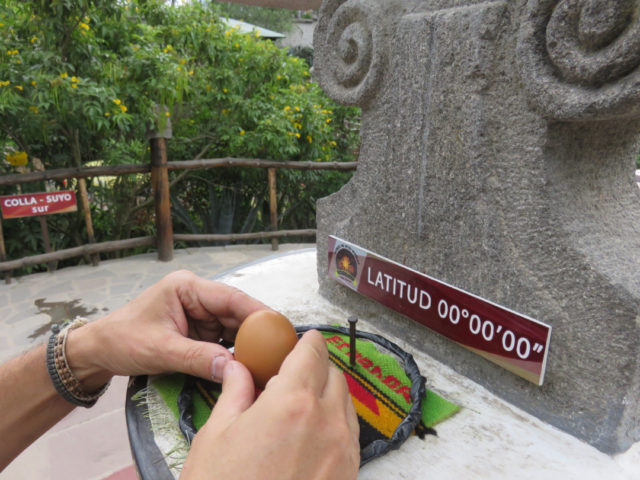
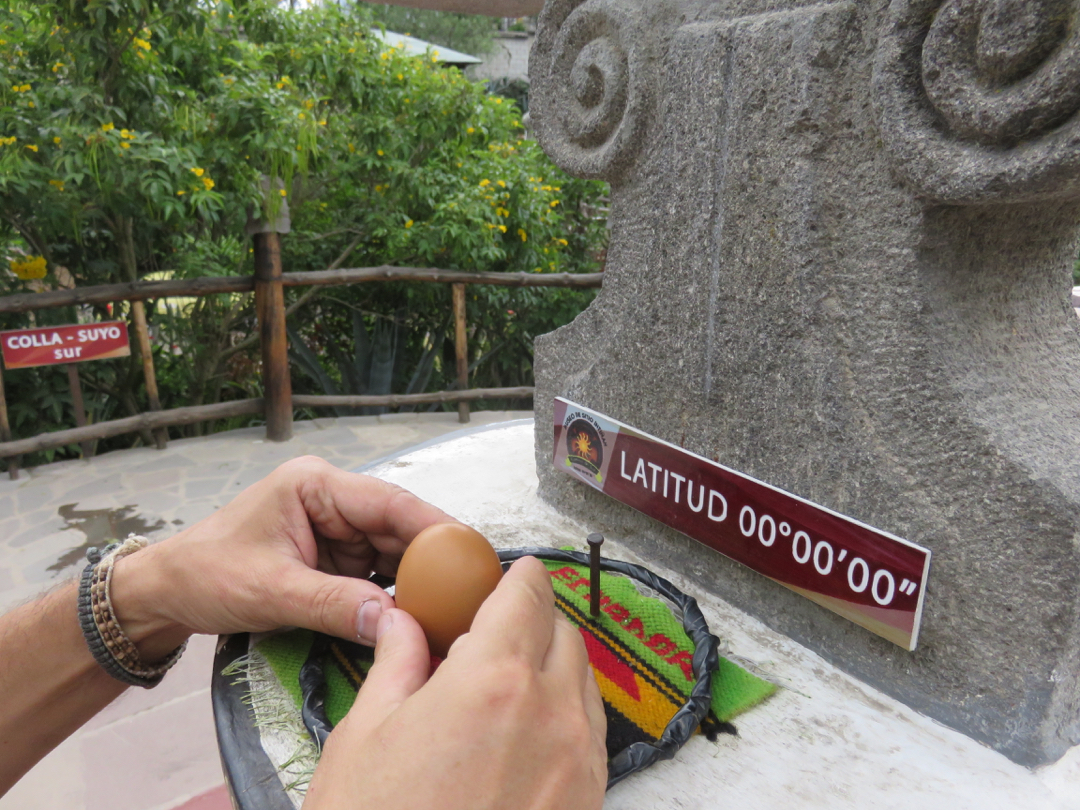
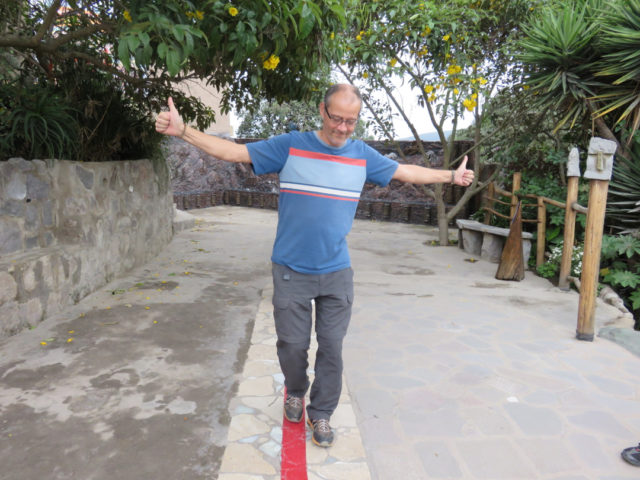
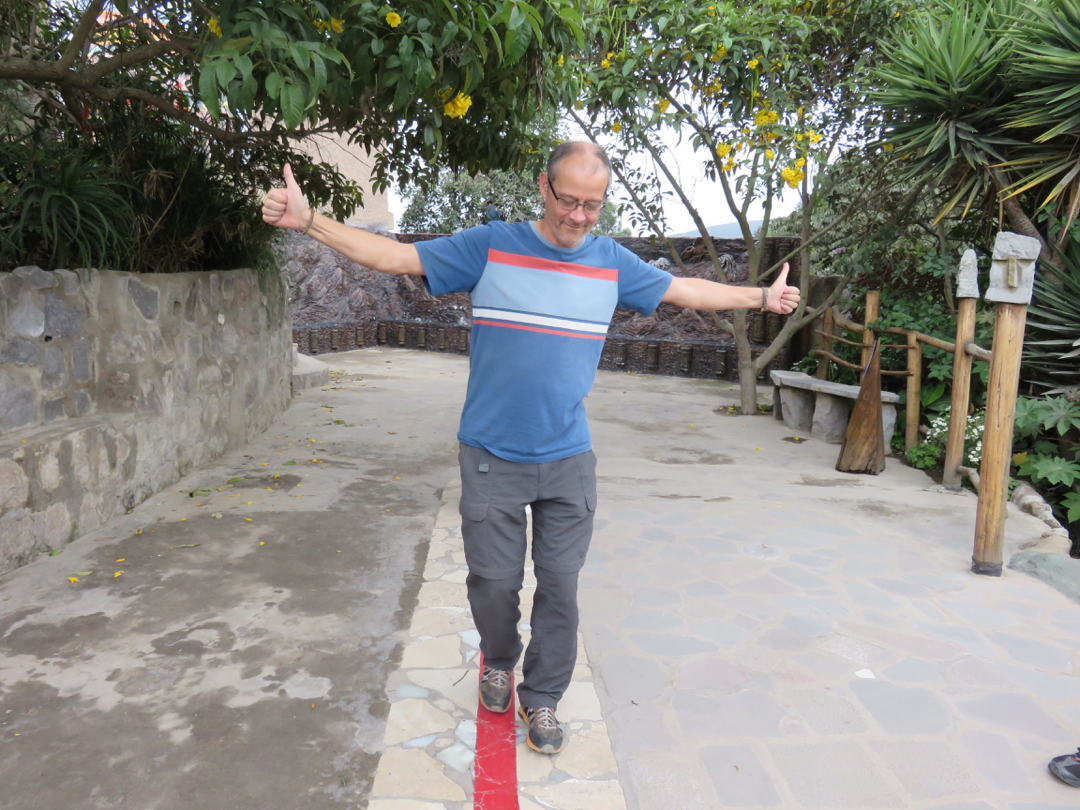
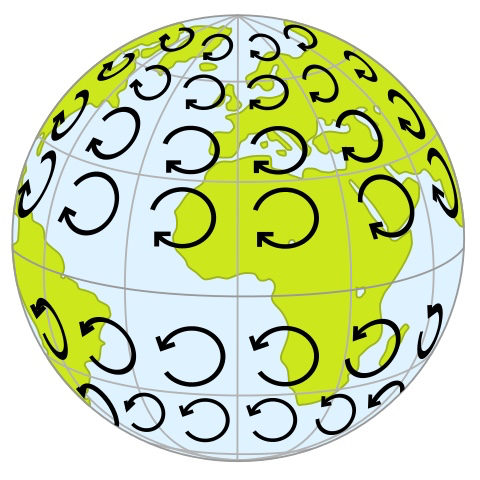
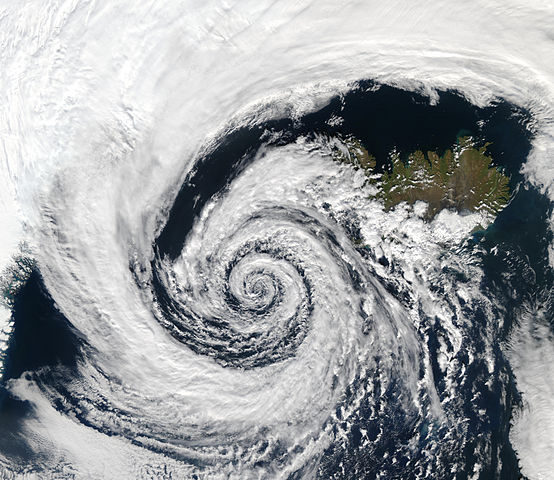

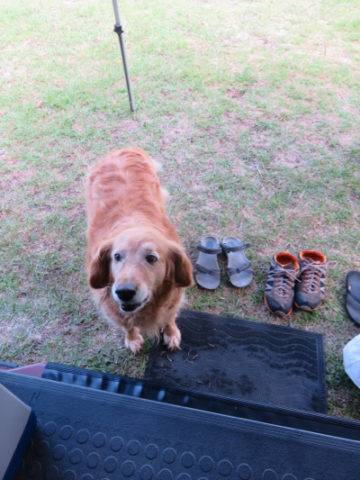
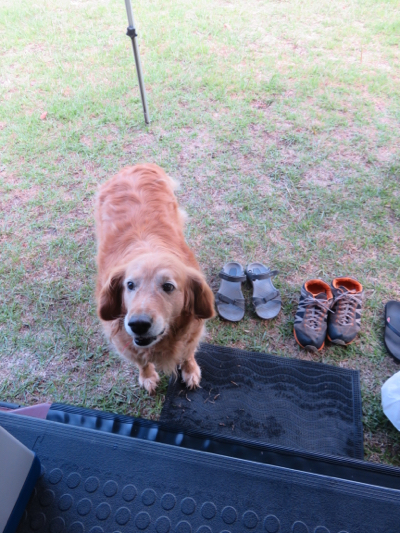
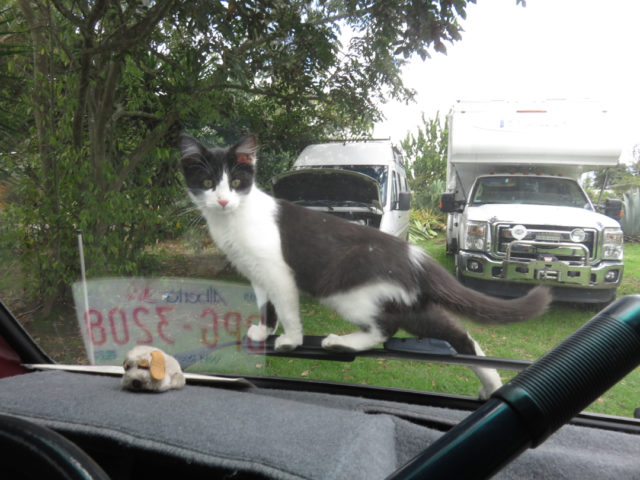
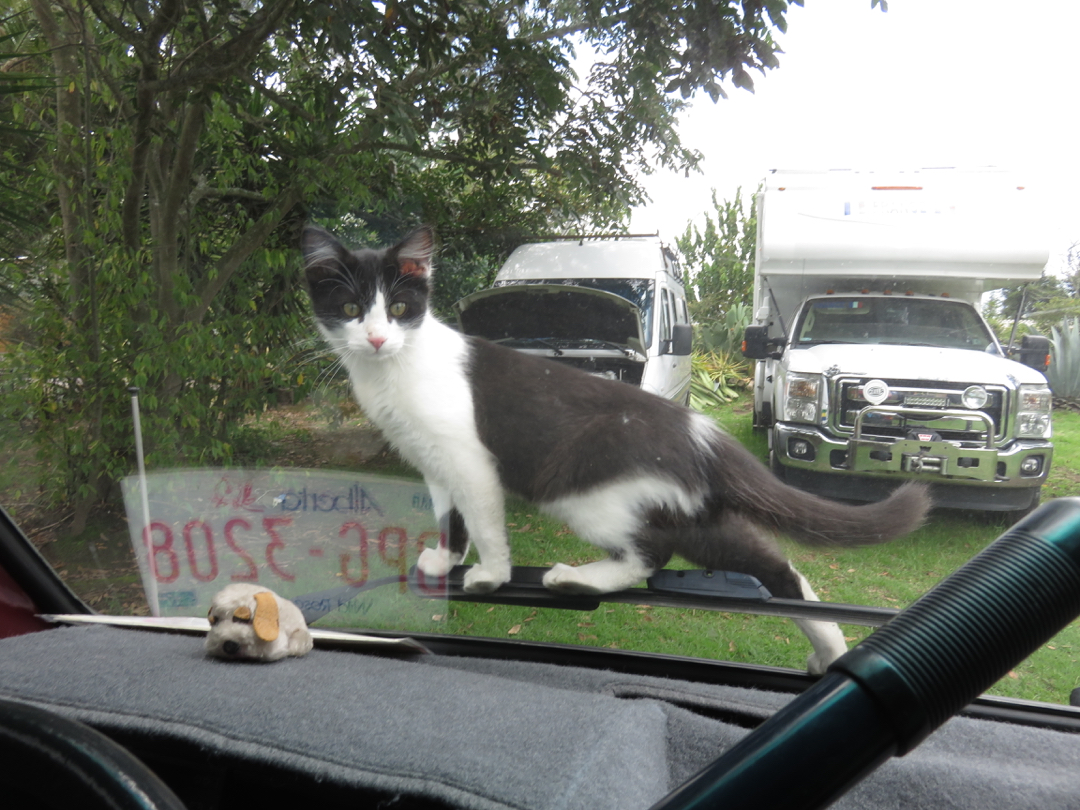
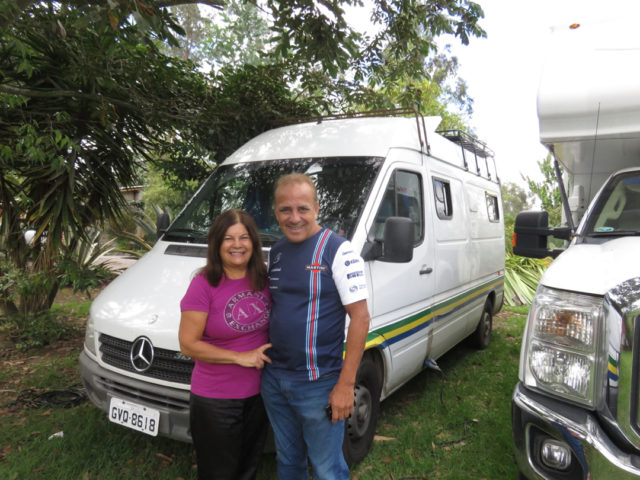
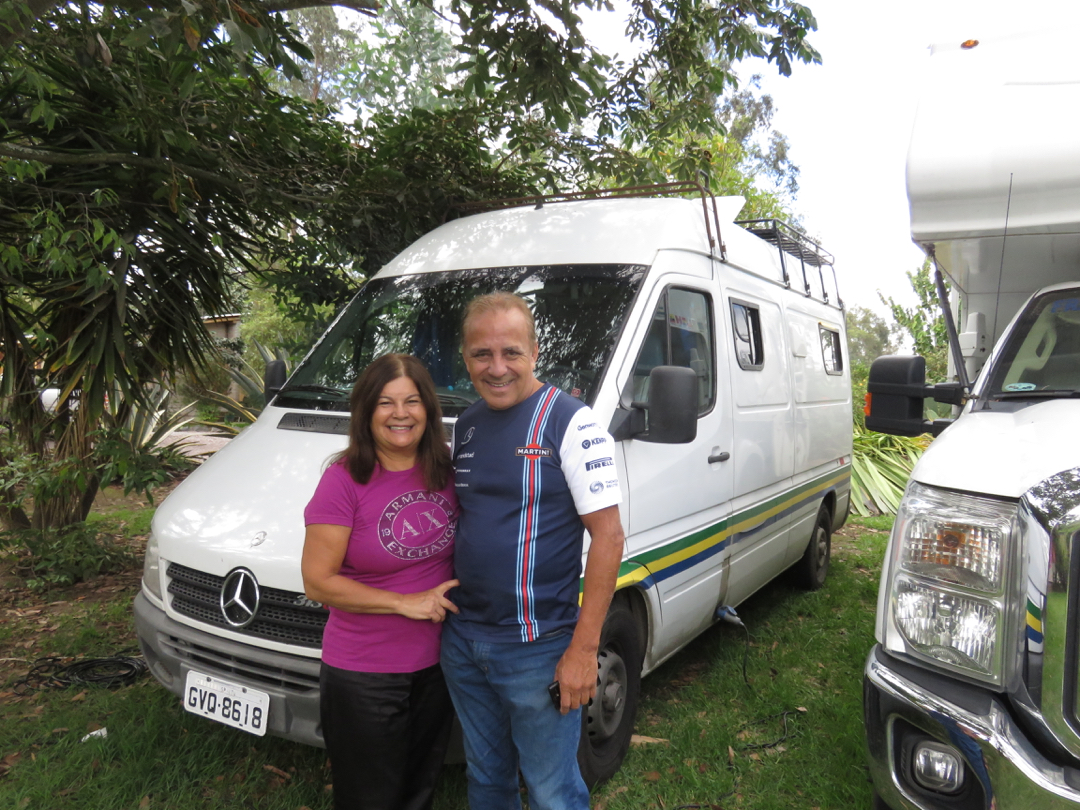
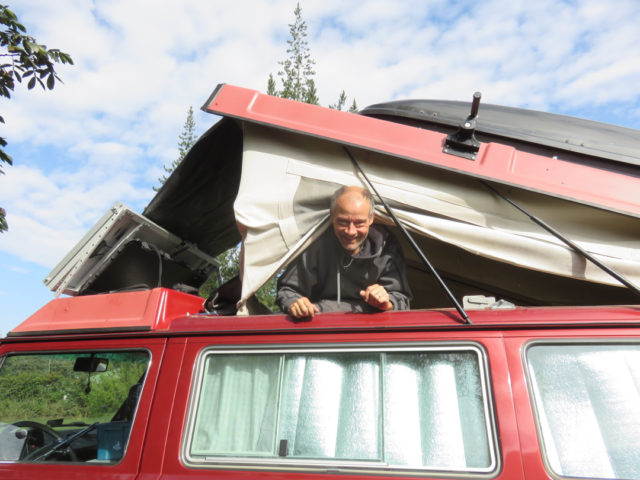
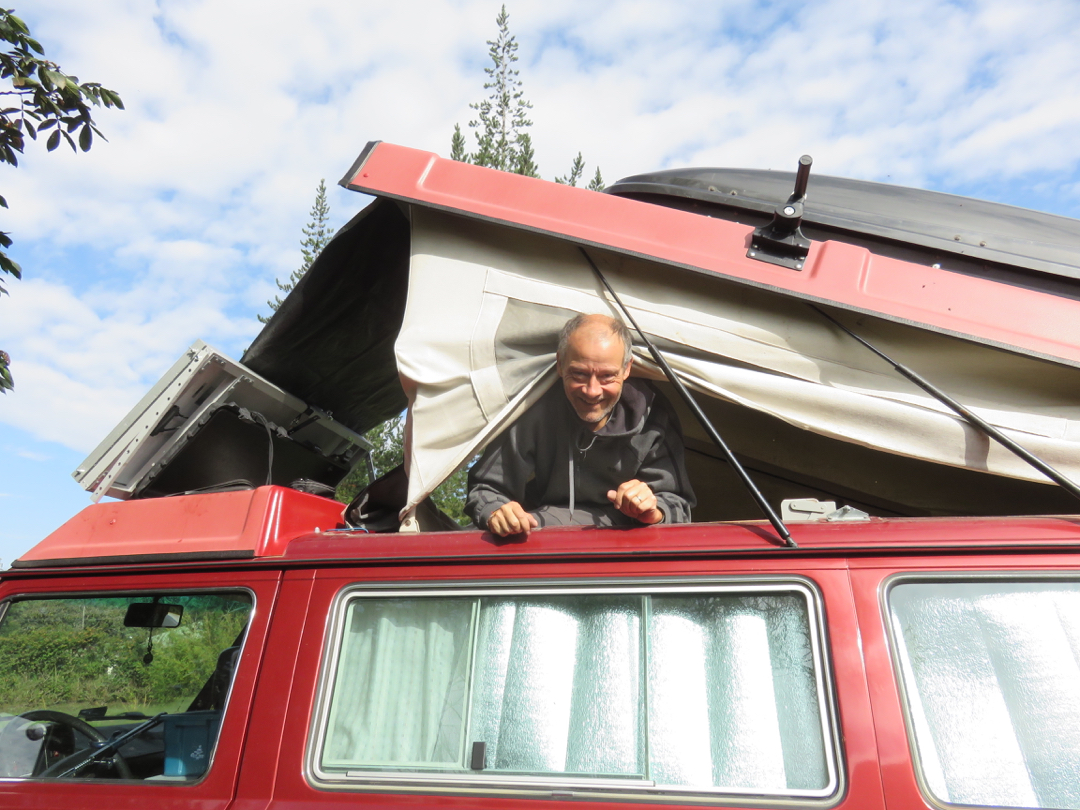
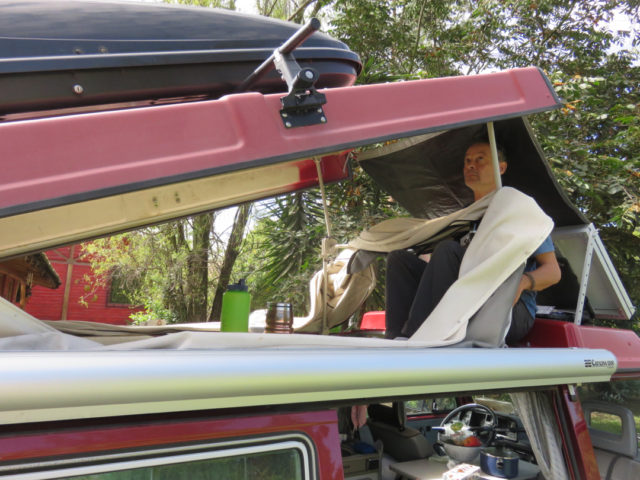
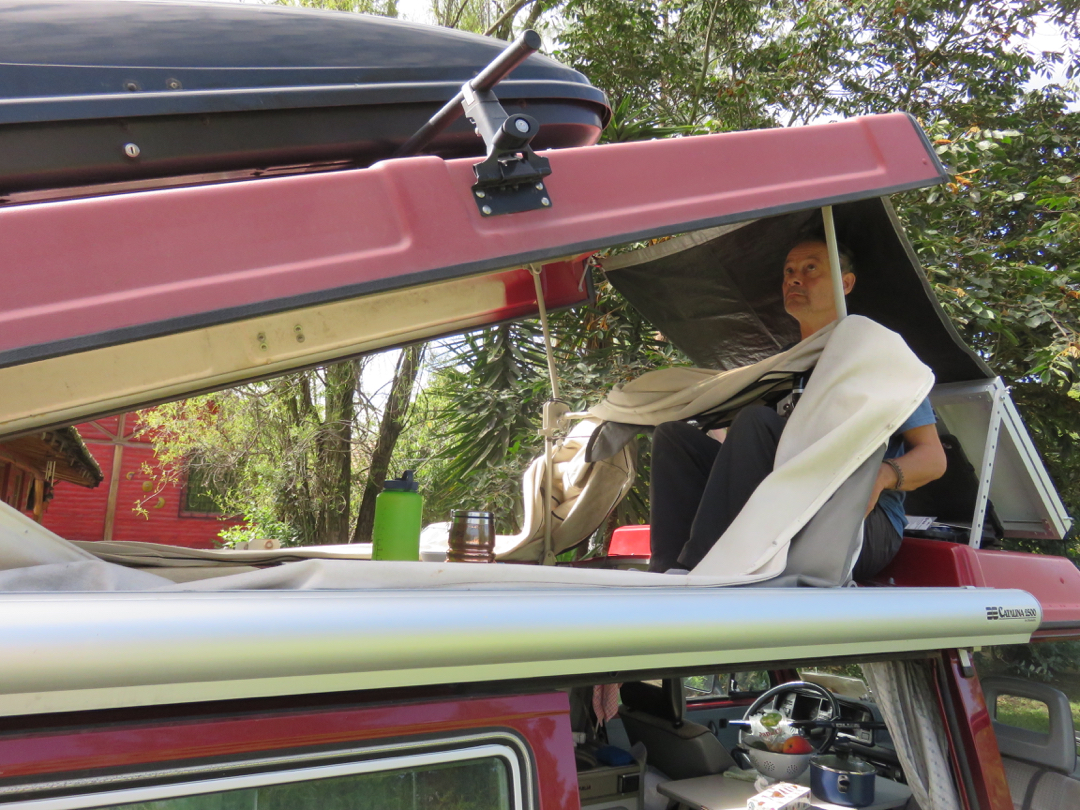
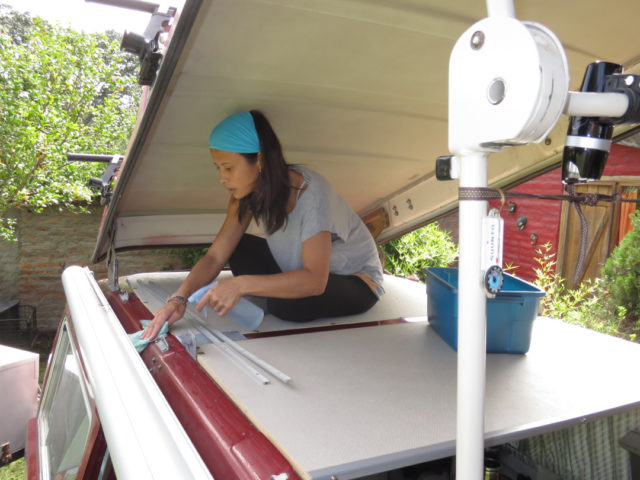
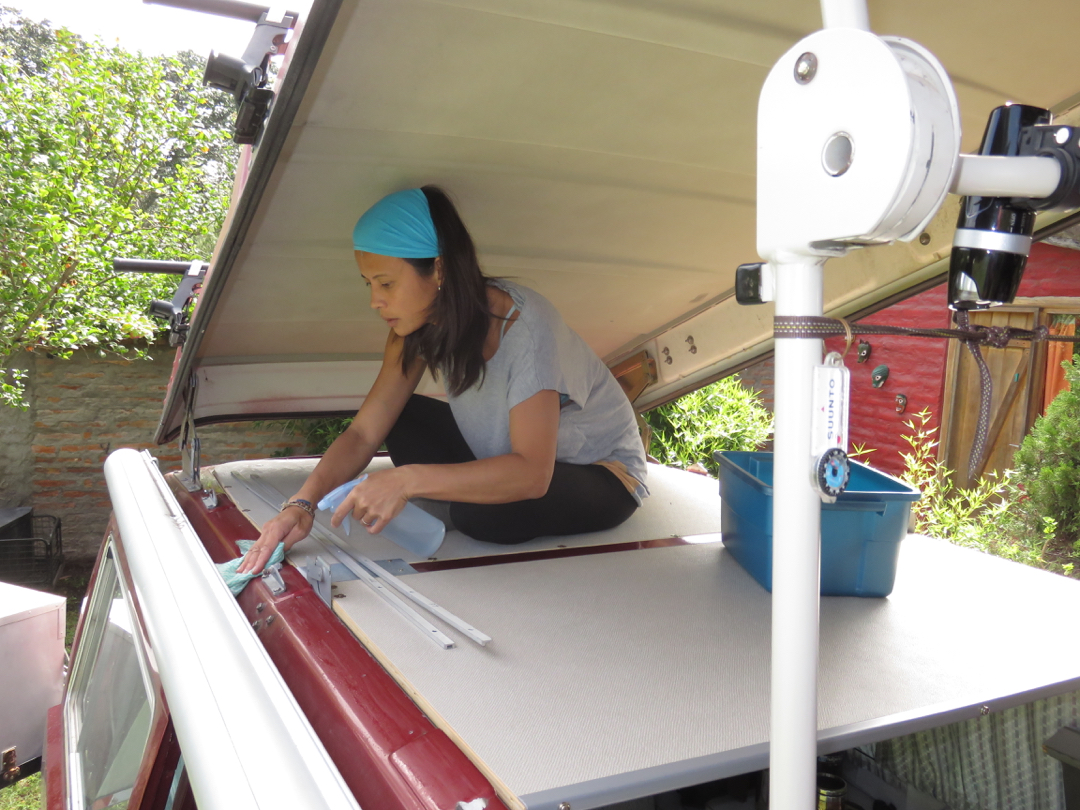
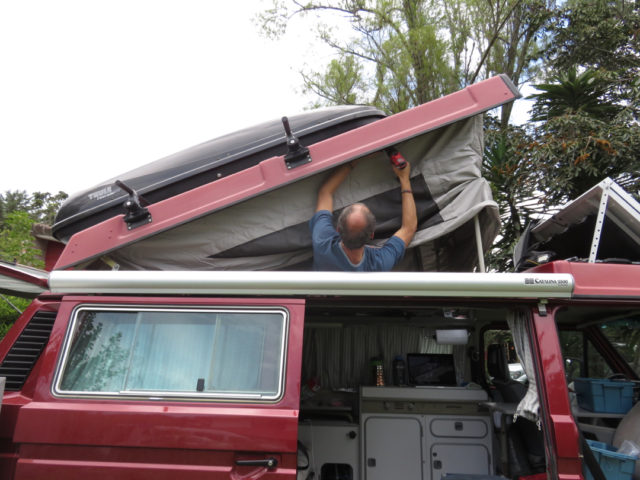

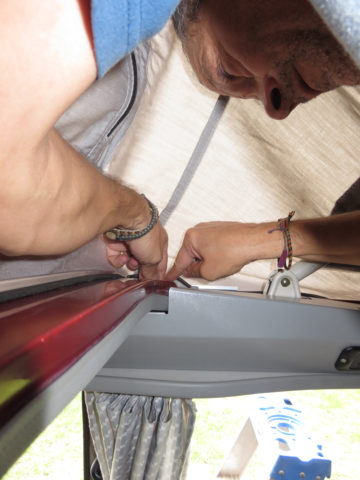
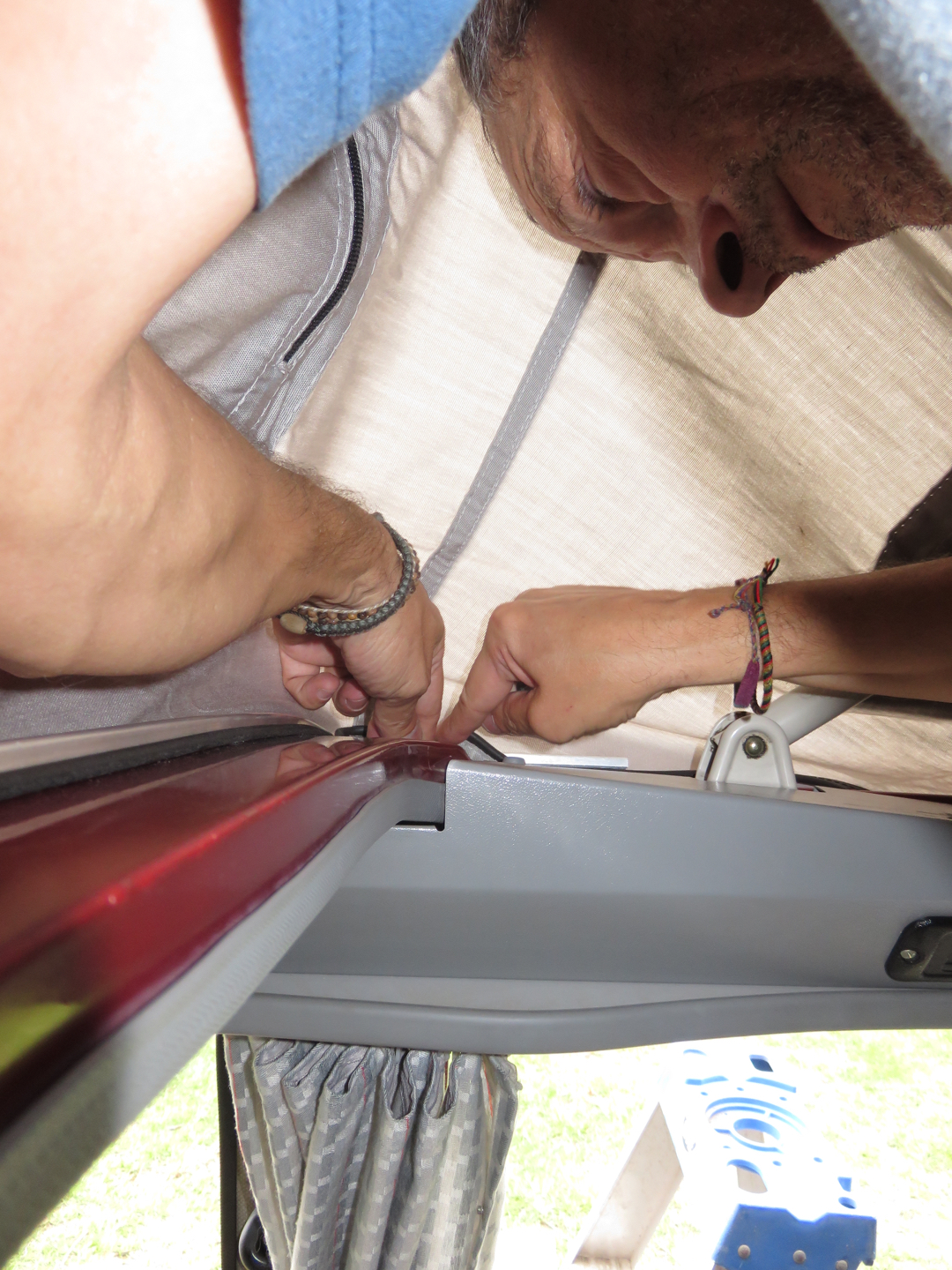
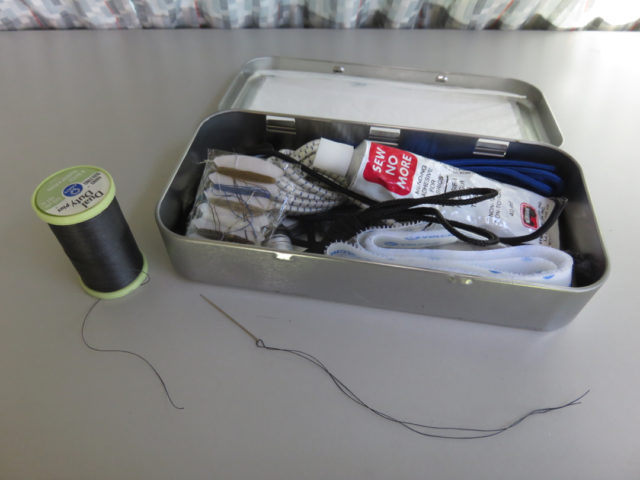
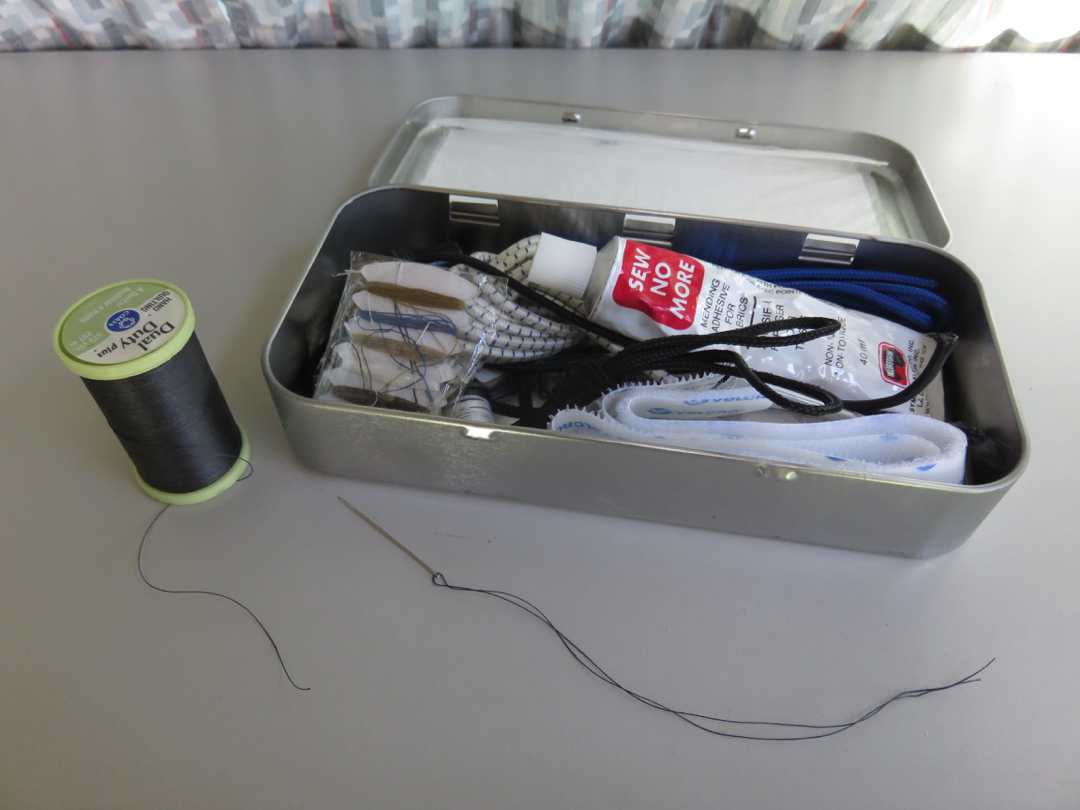
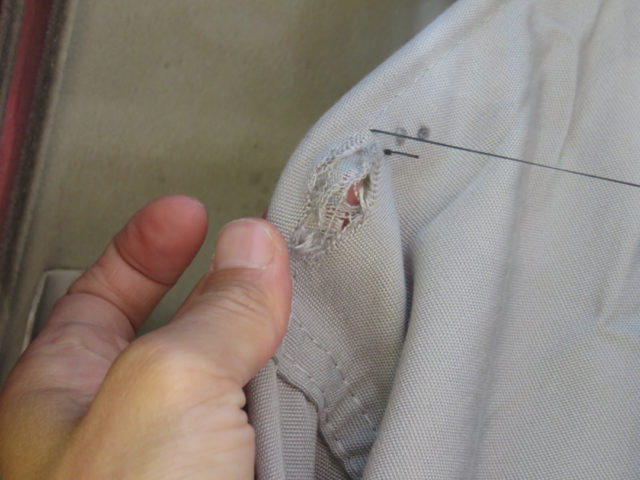
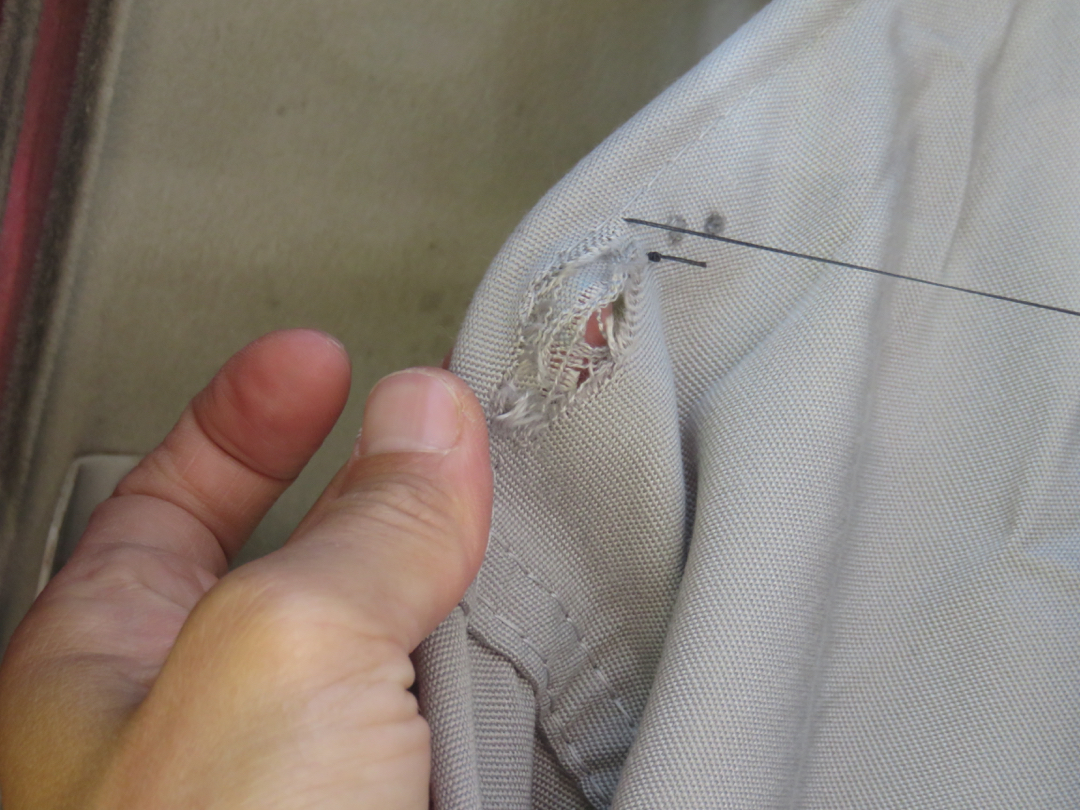

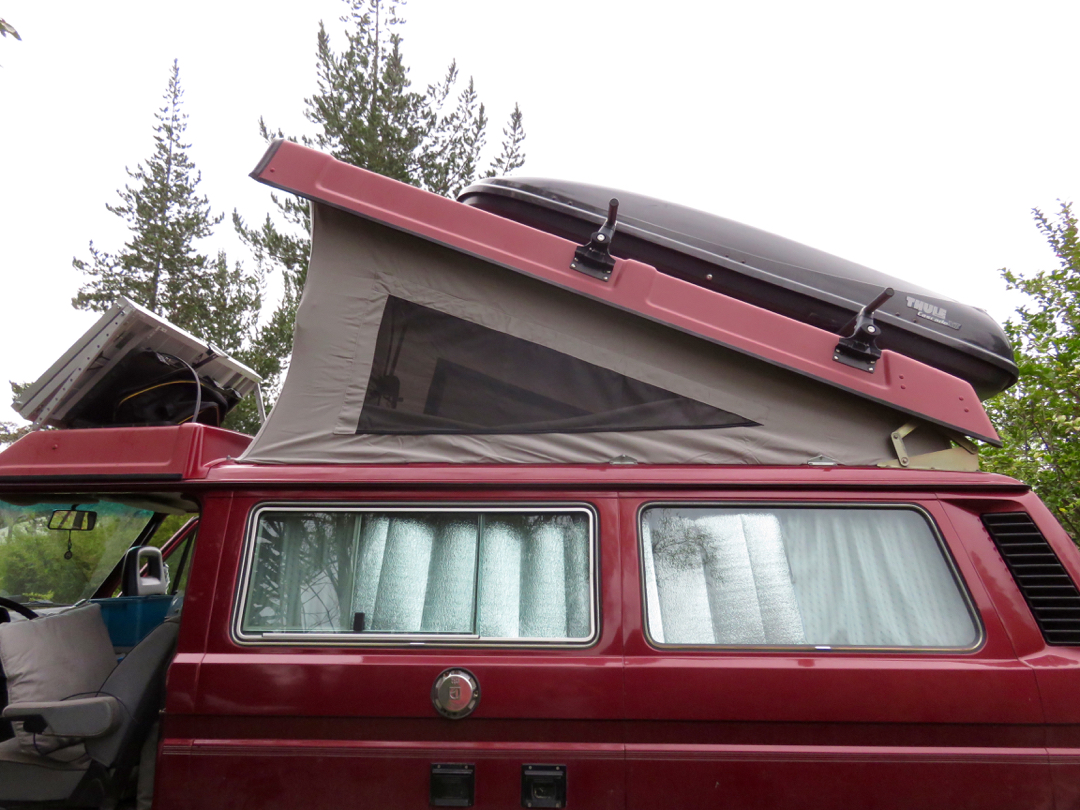
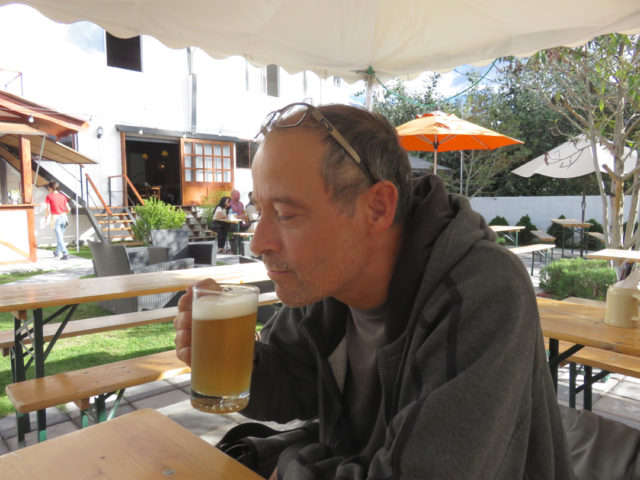
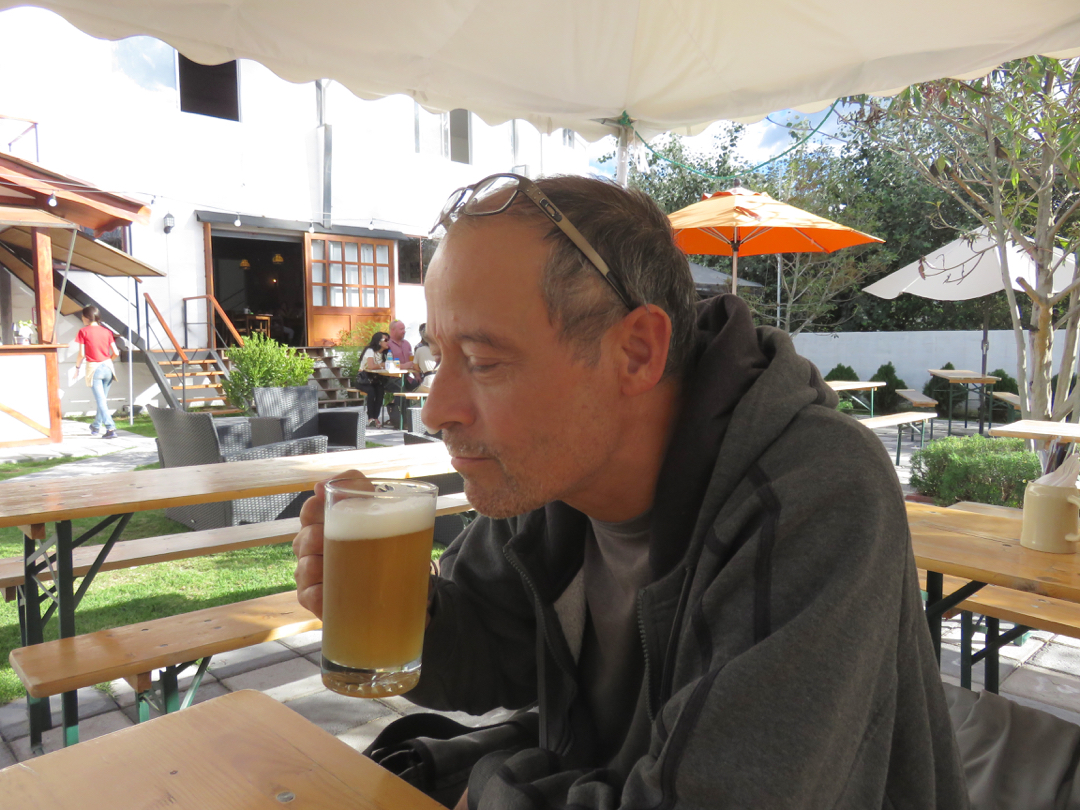
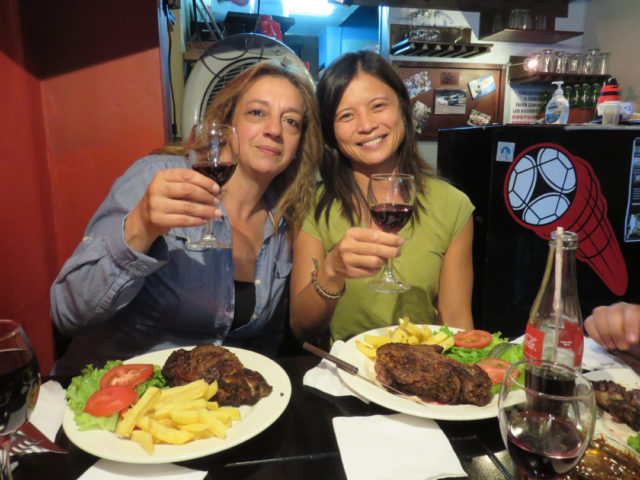
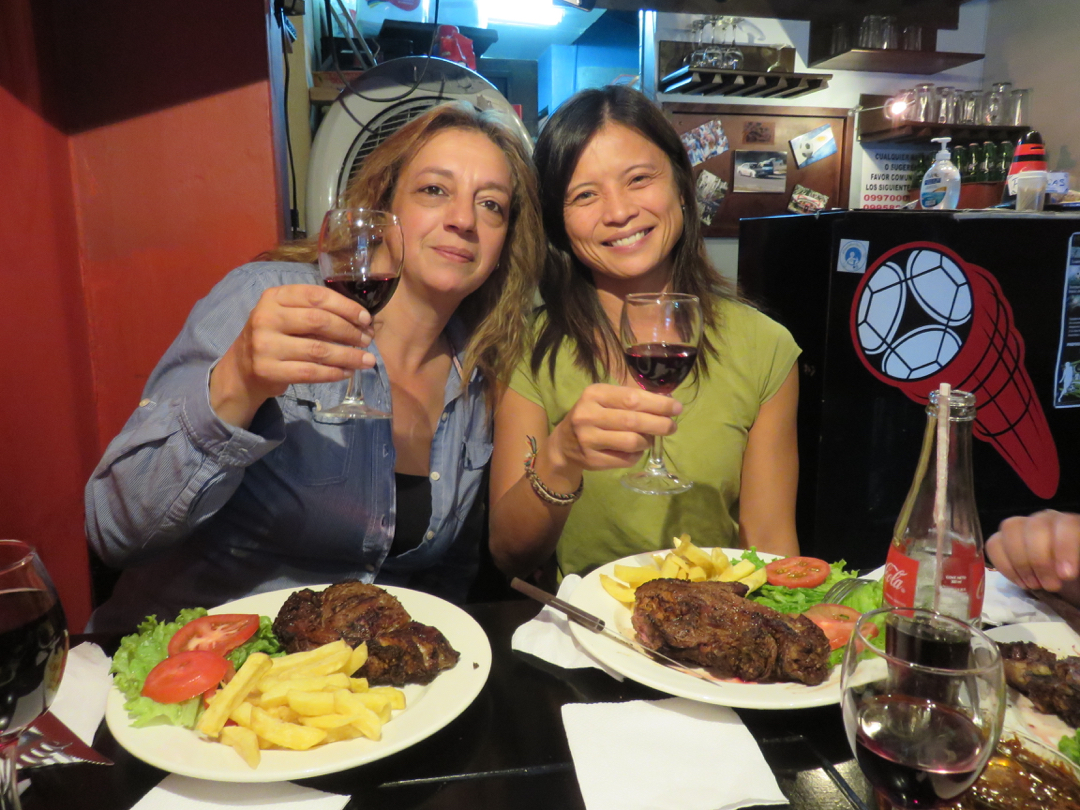
Enjoyed reading about your adventures in Ecuador.
Hi Vicky, thanks for reading and for sharing your feedback. Looking forward to meeting you in August!
I love your pictures at the equator! And it must have been quite the experience to have witnessed the Good Friday procession.
Looking forward to hearing about Part 2.
Much love to you both.
Hey Janice, yes the procession brought up a whole mix of feelings for me: nostalgia, awe, discomfort, fascination. Gregor had a hard time comprehending the whole thing. Glad I was there for Good Friday but if I don’t see another parade like that again, that would be just fine 🙂 Hugs to all of you!
I love all the new friends you are making in your travels! You both look so happy. Miss you.
Similar to Colombia, we enjoyed Ecuador because the people we met made our experiences there really special. Goes to show that pretty landscapes alone don’t make a country. Now we’re in Peru and we’re still getting to know it, but already the vibe is very different. You’ll find out why in future blog posts!
Great stories Janice! You and Gregor certainly are kept busy looking after Lucky’s many needs. She is quite the diva, isn’t she? 😉
Ted, you called it – Lucky is definitely a diva! It’s typical for us to give up a sight-seeing opportunity to tend to her needs (sigh). That said, she’s gotten us this far so she deserves some pampering now and again. Always an adventure in a VW van 🙂